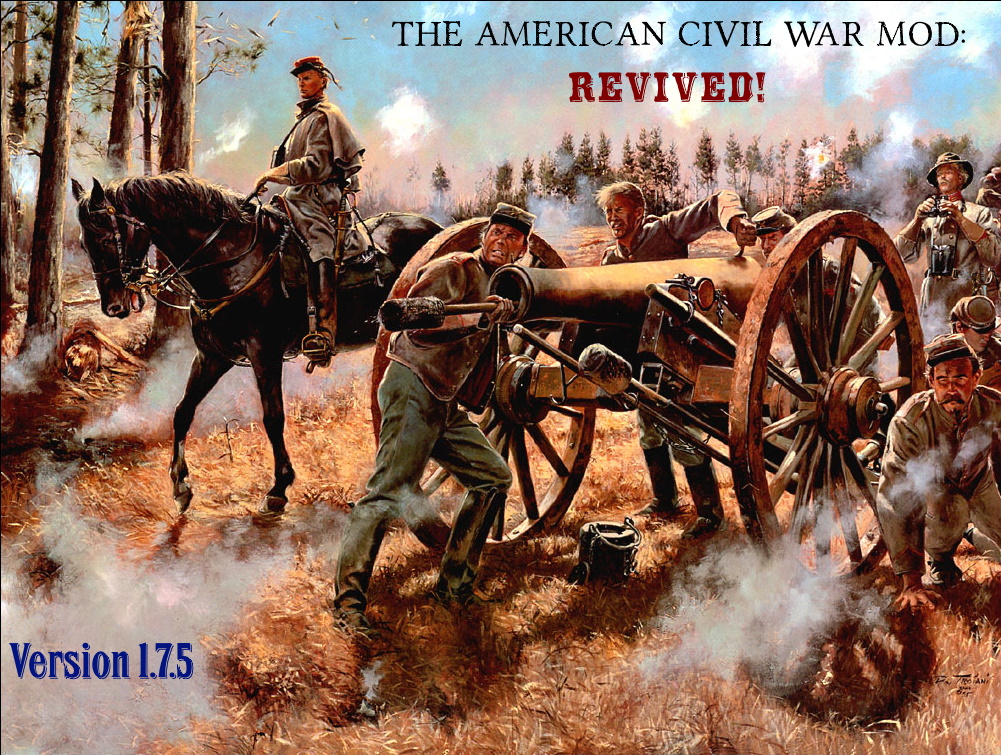
"War means fighting. The business of the soldier is to fight. To move swiftly, strike vigorously, and secure all the fruits of victory, is the secret of successful war." ~ Thomas J. "Stonewall" Jackson
- Make sure you delete any previous versions of the mod.
- Download the winrar package called, "The American Civil War Mod Revived v1.7.5", and save it to your desktop or another preferred destination that you can easily access.
- Open the package and extract the folder inside called, "The American Civil War Mod Revived v1.7.5", to your modules folder (C:\Program Files (x86)\Steam\steamapps\common\MountBlade Warband\Modules).
- Start Mount & Blade: Warband, select the mod from the drop down menu, and play!
You can join the mod's discord server here: Discord.gg
Welcome to another update to the American Civil War Mod: Revived! We have a lot of great new content to share, including a number of significant changes that we originally didn't expect to accomplish for a long time. This is thanks to the informative and gracious help of several experienced coders who volunteered their time and service to our cause, including Useful Lesbian (Eldar), Johandros, and MarcosPZero. They deserve the utmost praise and respect for being willing to offer us their assistance and it is only because of them that we have been able to make such rapid and unexpected progress. This is, of course, not to diminish the enormous efforts that Matsuri5 and myself have committed ourselves to, but because of their assistance, we were able to accomplish so much more than we would have been able to do on our own. Together, we were able to create a new source code for the mod and begin using the module system, and with this comes an enormous amount of potential. Many fan requested features are now possible, and some have already been fulfilled in this update. We will go into detail below on all of the most important and obvious changes, and a full changelog will be provided on the download page and in the mod package.
Artillery
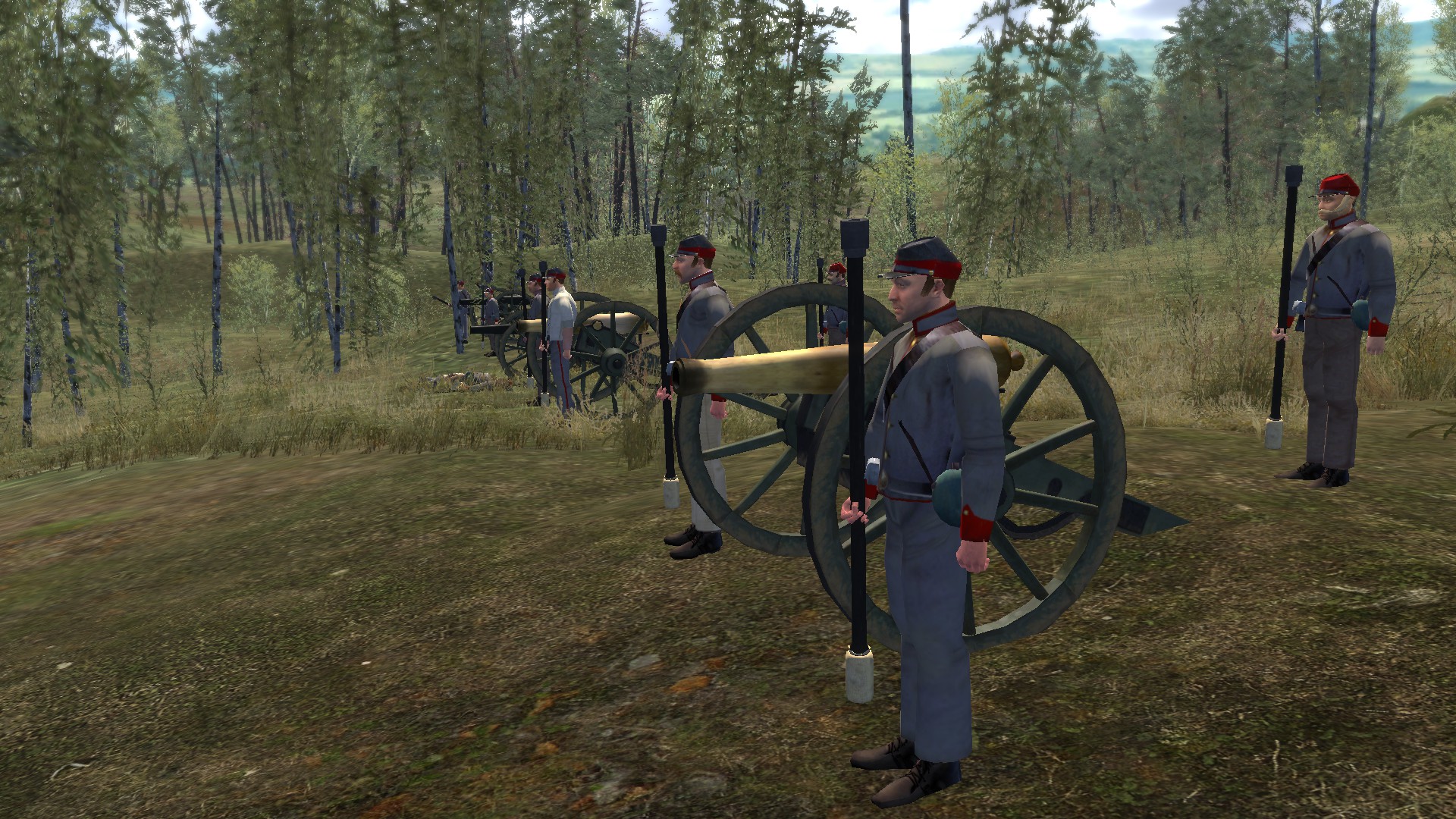
For a long time, one of the most highly requested and desired features in the mod, has of course been working artillery. Now that we have begun work with the module system, artillery has become possible, and we have even added 3 different types of cannon. Artillery can be recruited in cities by visiting the foundry, and the player will be able to recruit a maximum of 2 guns, which can be combined with allied AI artillery crews in battle to make a battery of 4 guns total. We experimented with having 4 guns per party, but this seems to cause errors and other problems. The original creator of the artillery code had left a disclaimer himself that using more than 2 guns per party is not stable, and so after our own tests to see if we could get it to work had failed, we inevitably were forced to follow that guidance.
If you are not a member of either the Union or the Confederacy, then you will recruit a militia artillery crew and they will wear some of the armed civilian outfits we have. Union and Confederate crews have their own new uniforms, and you will find the artilleryman's cap badge on their kepi's. We have also added new sound effects for the cannon fire as well as the impact of their projectiles, taken from recordings of live firing Civil War artillery. A well placed hit from one of the cannons can take out five or more soldiers, and it is powerful against tightly packed formations. This adds a whole new dimension of strategy to the game, where a player can come under attack from enemy artillery fire, forcing you to leave what could be a very favorable position in order to attack their guns and stop your army from being completely destroyed by them. Likewise it can also tip the balance of a battle in your favor, if the enemy lacks artillery, or you are able to kill their crews, while you keep your gun crews safe and they are able to score good hits on the enemy.
The AI general's use of artillery requires some time to pass by in the game in order for the AI to travel and recruit the crews on their own. Usually after a few days in-game, maybe a week or two at most, the artillery will start to show up for the AI generals. Unfortunately the player can't control where artillery is spawned, so you will need to choose the battlefields you fight on carefully. Always check where the cannons are positioned at the start of every battle, and tab out if you have to. Keep in mind though that the guns will shoot over hills, so you don't have to worry about making sure the cannon has a perfect view of the enemy. The gun crews are assigned to group 9 (sixth platoon in the mod).
Below is a short preview video of the artillery effects and sounds.
12-Pounder Napoleon
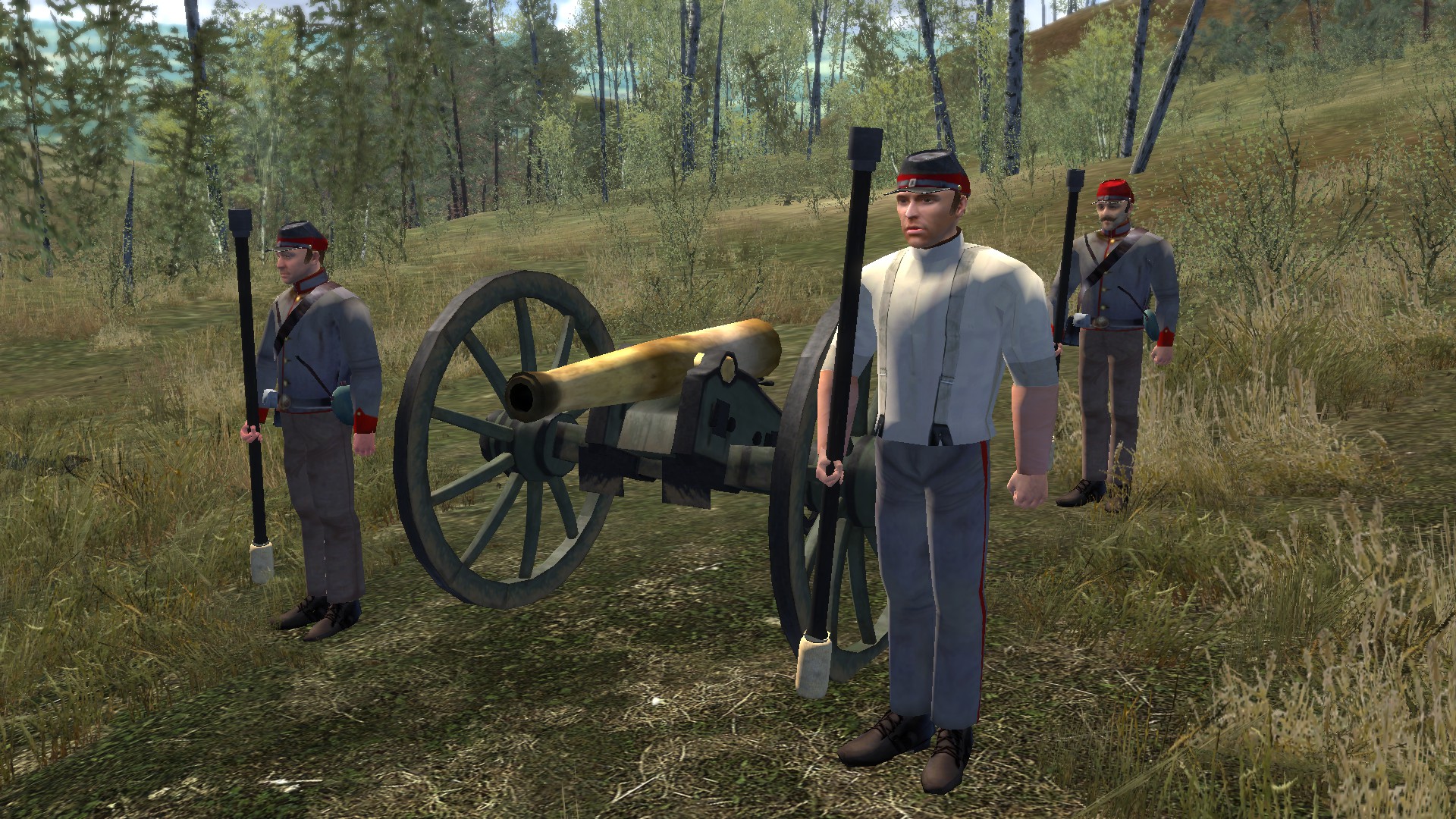
The 12-Pounder Napoleon was was a type of gun-howitzer developed by France in 1853, named after French President and Emperor Napoleon III. The Napoleon's performance and it's ability to fire either ball, shell, canister or grapeshot, allowed it to replace all the previous French field guns as well as the two howitzers of their Valée artillery system. During the American Civil war, the 12-lber Napoleon was originally intended to replace the Model 1841 6-Pounder, though both guns were used out of necessity. The Napoleon was the most commonly used artillery piece on both sides, making up to 40% of all cannons used during the war. The Union manufactured 1,156 Napoleon guns while the Confederacy produced 501. At the Battle of Gettysburg, 142 out of 360 Union guns present (36%) were Napoleons. Due to the lack of manufacturing capability in the South, the Confederates attempted to capture as many Union-made Napoleon 12-pounders as they could. Weighing in at 2,600 pounds (1,200 kg) they required a six-horse team to pull, and a gun crew of six men. The smoothbore gun could fire a projectile 1,400 yards (1,300 m) at a speed of 1,440 feet per second (or 439 meters per second), using a charge of 2.5 pounds (1.1 kg) of black powder. Because of its safety, reliability, and killing power, especially at close range, the 12-Pounder Napoleon was widely admired. The Napoleon was the last cast bronze gun used by an American army.
10-Pounder Parrott Rifle
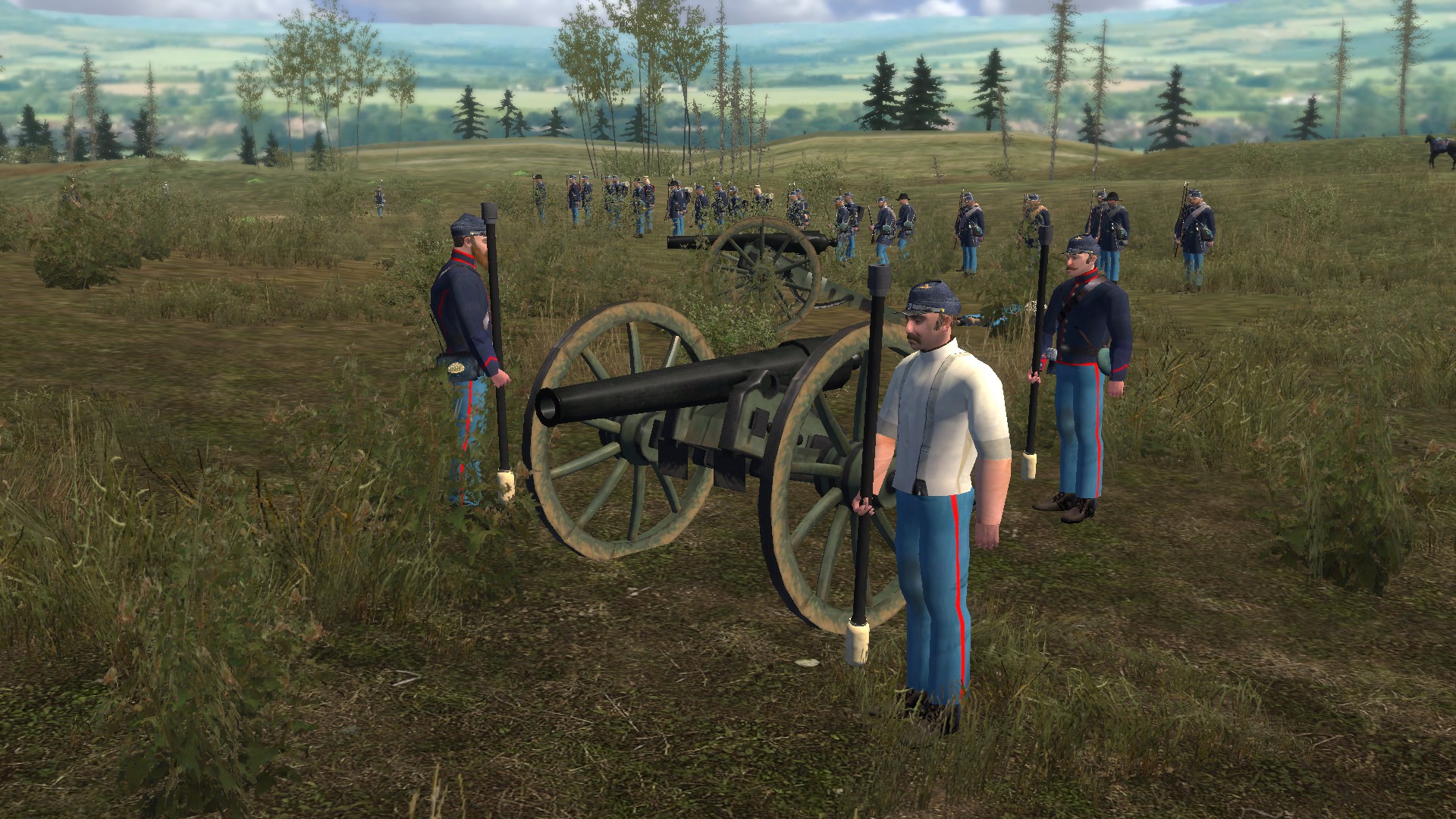
Invented by Captain Robert Parker Parrott, a West Point graduate and inventor of military ordnance, the first Parrott rifle (and corresponding projectile) was created in 1860 and patented in 1861. Parrotts were a type of rifled artillery manufactured with a combination of cast and wrought iron. The cast iron made for an accurate gun, but was brittle enough to suffer fractures. Therefore, a large wrought iron reinforcing band was overlaid on the breech to give it additional strength. The method of securing this band was the innovation that allowed the Parrott to overcome the deficiencies of earlier models. Robert Parrott later remarked, "I do not profess to think that they are the best gun in the world, but I think they were the best practical thing that could be got at the time".
The 10-Pounder Parrott was adopted by the United States Army in 1861 and often used in field artillery units during the American Civil War. The gun could fire a 9.5 lb (4.3 kg) projectile to a distance of 1,850 yd (1,692 m) and was capable of firing shell, shrapnel shell, canister shot, or solid shot. Despite the reinforcing band, the guns occasionally burst without warning, inflicting injury on the gun crews, and many artillerists shunned them because of this. However, the Parrott field guns were simple for the gun crews to operate and when the Parrott gun burst in battle, artillerists would chip out the jagged parts and continue firing. The 10-Pounder Parrott was also cheaper to produce, with a cost of $180 per gun barrel, compared to the bronze 12-Pounder Napoleon costing $550 and the 3-inch Ordnance rifle's price of $350 per gun.
In 1860, the West Point Foundry sold a Parrott rifle to the state of Virginia. The artillery piece was put through trials by Thomas J. "Stonewall" Jackson himself, who was at the time a little-known Virginia Military Institute professor, only later to become the famous general. Jackson was impressed by its range and accuracy, and gave it a glowing report. This lead to the state of Virginia ordering 12 more guns. With the outbreak of war, the Tredegar Iron Works began manufacturing a copy of the 2.9-inch Parrott rifle for the Confederacy. Tredegar produced 80 2.9-inch Parrott rifles from November 1861 to February 1865. Other Confederate gun founders manufactured the Parrott rifles including A. B. Reading & Brother of Vicksburg, Mississippi, Street, Hungerford & Jackson of Memphis, Tennessee, and Bujac and Bennett of New Orleans.
3-inch Ordnance Rifle
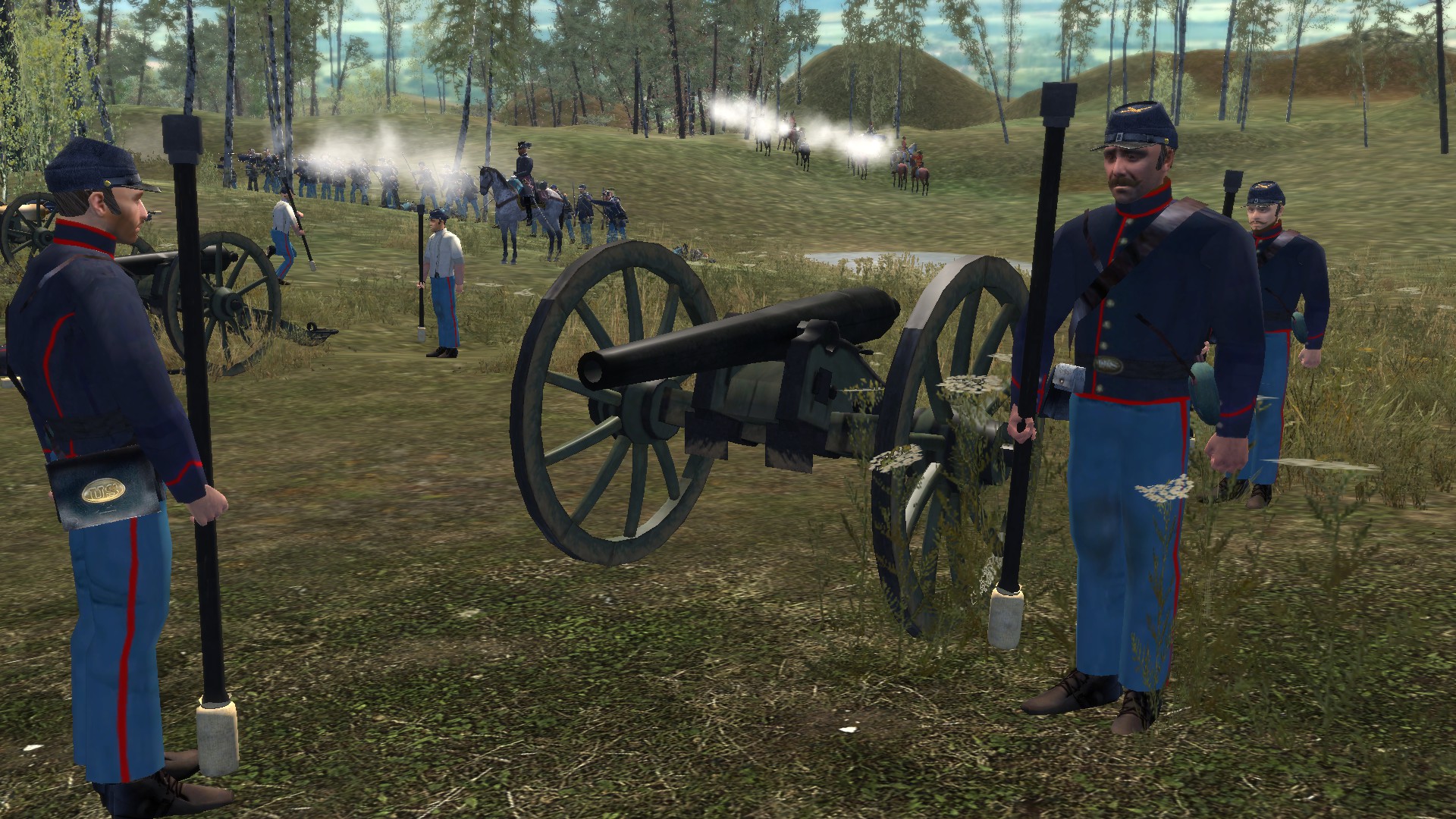
The 3-inch ordnance rifle was a wrought iron rifled cannon produced by the Phoenix Iron Works of Phoenixville, Pennsylvania in 1854. The gun was adopted by the United States Army in 1861 and was widely used in field artillery units during the American Civil War. It fired a 9.5 lb (4.3 kg) projectile to a distance of 1,830 yd (1,670 m) and though it was not as effective at firing canister shot as the heavier 12-Pounder Napoleon, it proved to be highly accurate at longer ranges when firing shell or shrapnel. The 3-inch ordnance rifle proved to be extremely durable in action, with only one reported case of bursting at the Battle of the Wilderness in 1864 when a 3-inch ordnance rifle in R. Bruce Ricketts's Battery F, 1st Pennsylvania Light Artillery blew its muzzle off when firing double-canister on the Plank Road. This was in stark contrast to the dangerously unreliable 10-pounder Parrott. The 3-inch ordnance rifle was also capable of extraordinary accuracy. During one of the battles of the Atlanta Campaign in 1864, a Confederate gunner in Lumsden's battery reported that one of his guns was placed in a fortification with an embrasure about one foot wide. Within a short time, three shells came through this opening from a 3-inch ordnance rifle without exploding. The first struck the gun between the trunnions and vent, gouging out some metal. The second damaged the left cheek of the gun carriage. The third struck the gun's muzzle, crushing it inward, making the gun impossible to load and putting it out of action. The Confederacy lacked the technology to manufacture successful copies of the 3-inch ordnance rifle, but they respected the weapons and employed those captured from Union forces.
While used mostly by the Union army, rifled guns were still a new idea and were not very popular among artillery officers or field commanders. A problem with the rifled guns was they fired too far for the gunners to accurately see to range their targets, however when artillery observers and balloons began to be used for artillery spotting, this increased the accuracy of the rifled guns. Training artillery crews in the use of rifled guns also took longer and was more difficult than on smoothbore guns. General George McClellan was among the Union officers who felt that the American terrain was not well suited for the very long range of these weapons. Jefferson Davis, the Confederate President was of the same opinion. All these factors contributed to the slow acceptance of rifled cannon.
New Units
1st Cherokee Mounted Rifles
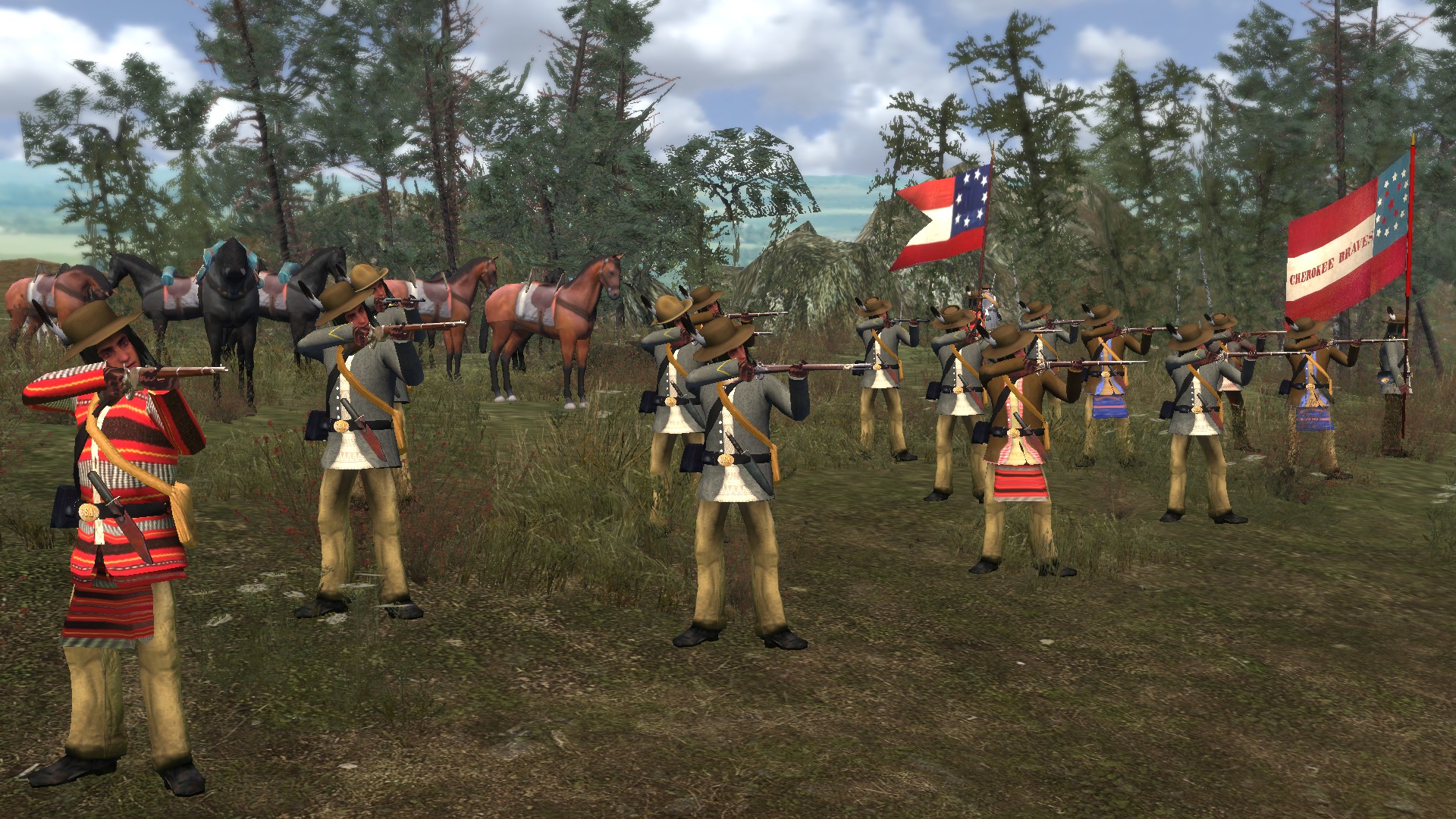
In July 1861, Confederate officials commissioned Stand Watie as a colonel in the Confederate States Army and authorized him to raise the Cherokee Mounted Volunteers. After Cherokee Principal Chief John Ross signed the Cherokee-Confederate treaty of alliance in October 1861, he and the Cherokee Council authorized and raised the First Regiment of Cherokee Mounted Rifles, commanded by Colonel John Drew. The regimental officers and men under Drew's command were largely full-blooded Cherokees, who were ideologically uncommitted to the goals of the Confederacy, but were loyal to Chief John Ross. Watie's regiment became the Second Regiment of Cherokee Mounted Rifles, and Watie's regiment consisted largely of Cherokees of mixed blood (Métis) who, as slaveholders, favored the Confederate cause.
Drew's regiment became part of Colonel Cooper's command and was ordered to help stop the retreat of Union supporting Creeks, led by their principal chief Opothleyahola, who were attempting to flee to Kansas. Although the unit participated in the Battle of Round Mountain, the Battle of Chusto-Talasah, and the Battle of Chustenahlah, they made known their dislike for fighting the Creeks, who had done the Cherokees no harm. A portion of Drew's regiment deserted in late 1861. Following the Battle of Old Fort Wayne in October 1862, most of the remainder of Drew's men, including Major Thomas Pegg, deserted to the Union army. What remained of his troops was combined with Watie's regiment and reorganized as the First Regiment of Cherokee Mounted Rifles with Watie in command.
During the Civil War, Watie's troops participated in 27 major engagements and numerous smaller skirmishes. Although some of the engagements were major battles, most of their activities utilized guerrilla tactics. From south of the Canadian River, Watie's men launched raids throughout northern-held Indian Territory and into Kansas and Missouri, tying down thousands of Union troops. Poorly equipped and armed mostly with castoff rifles or captured weapons, the Cherokees were well suited to this type of warfare. In May 1864, Watie was promoted to brigadier general. Watie's greatest victories included the Ambush of the steamboat J. R. Williams, in June 1864, and the capture of a Union wagon train at the Second Battle of Cabin Creek in September 1864. Watie is infamous for the burning of Rose Cottage, the home of Chief John Ross, as well as the burning of the Cherokee Council House in October 1863. At the Hay Camp Action (a.k.a. the Battle of Flat Rock) in September 1864, Watie and his men ambushed and massacred detachments of the First Kansas Colored Infantry and 2nd Regiment Kansas Volunteer Cavalry.
In February 1865, Watie was given command of the Indian Division of Indian Territory but was unable to launch any offensive operations. He disbanded most of his troops following the collapse of Confederate resistance in the spring of 1865. After participating in the Camp Napoleon Council in May, Stand Watie officially surrendered on June 23rd, 1865, dissolving his regiment and becoming the last Confederate general to lay down his arms.
In the mod, the 1st Cherokee Mounted Rifles are armed with a variety of rifles and carbines, and even use some powerful captured Union weapons. Since most of their weapons are rifles and can not be used on horseback, the regiment is best used as mounted infantry, where they use their horses to quickly get into a position, and then dismount to engage the enemy. They are a visually unique addition to the mod, as well as being rather unique in the way they are equipped and how they fight. The 1st Cherokee Mounted Rifles can be found in the troop tree under The Army of Pensacola as an upgrade from the Confederate Texas Lancer.
1st Florida Infantry
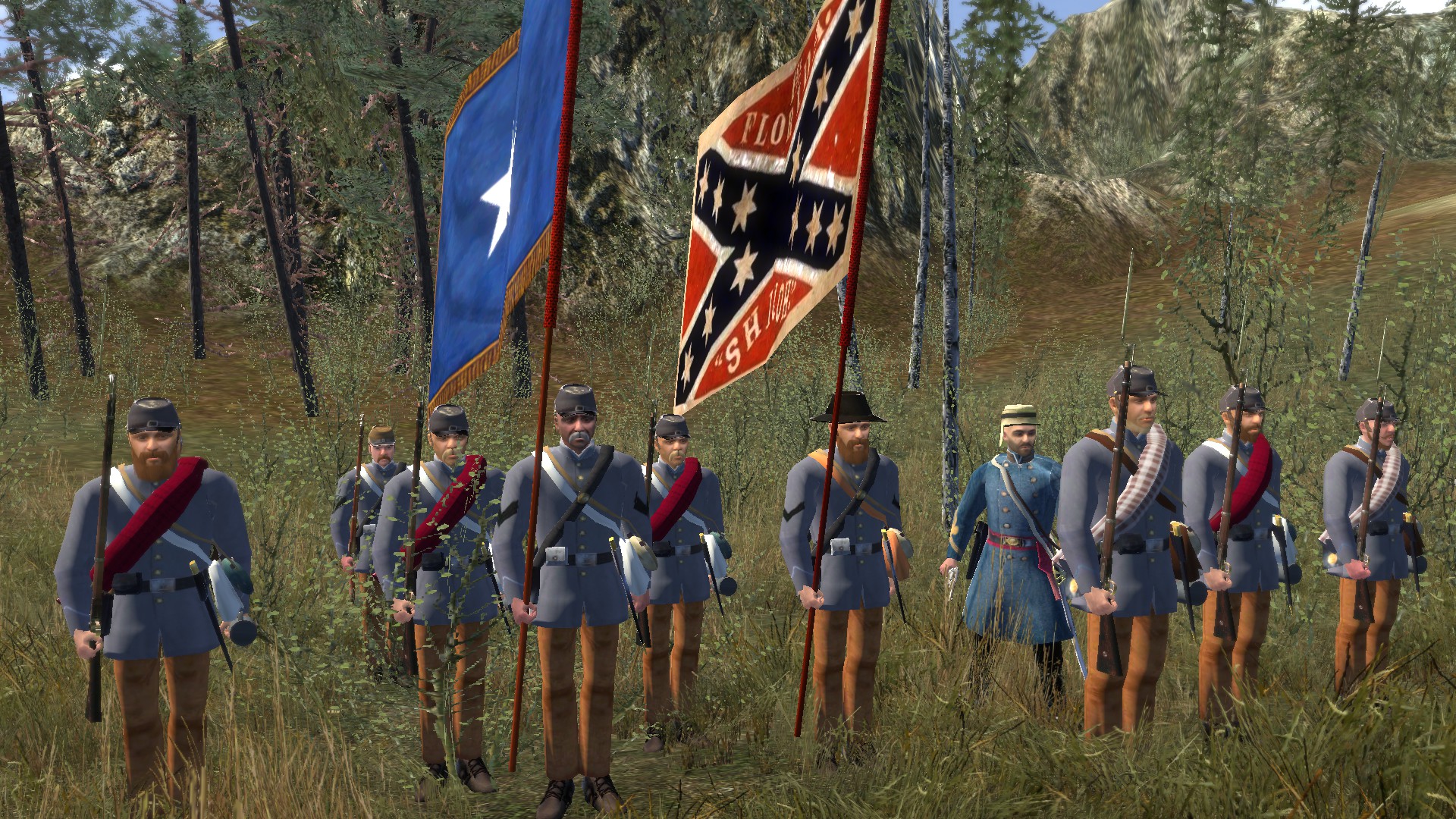
At the beginning of the civil war in 1861, the state of Florida rushed to raise a regiment of infantry. In March, at Chattahoochee Arsenal, men from the counties of Leon, Alachua, Madison, Jefferson, Jackson, Franklin, Gadsden, and Escambia assembled, and on May 5th, 1861, the 1st Florida Infantry Regiment was mustered into state service. However, due to the haste with which the regiment was formed, it suffered from an insufficient number of uniforms and weapons to equip all 700 men of the regiment's 9 companies. Upon completion of the regiment's organization, it was ordered to Pensacola, where it was mustered into Confederate service on April 19th.
On October 9th, 1861, a detachment of 180 men from the 1st Florida participated in the unsuccessful attempt to capture Fort Pickens. Colonel James P. Anderson led a column with his Floridians as well as men from Louisiana and Alabama, and the regiment lost 7 dead, 8 wounded and 12 men captured in the fighting. The 1st Florida Infantry then joined General Braxton Bragg on his journey west in March 1862, and went to Corinth. Like all regiments mustered in the early days of 1861, the 1st Florida had only enlisted for twelve months. When these 12 months were finished in early 1862, the regiment failed to reorganize when only 300 of the remaining 600 men reenlisted. Those 300 men were organized into four companies under the command of Major McDonnell, and the 1st (McDonell's) Florida Infantry Battalion, as it was now known, were just in time for the Battle of Shiloh.
On April 6th, 1862, 250 men of the 1st Florida were present and participated in the morning advance as part of the second line. Advancing along the Pittsburgh-Corinth Road, the regiment suffered under heavy fire from Ohio troops and artillery. When Major McDonell fell wounded by an artillery fragment, the command of the regiment passed to Captain William G. Poole. Anderson's brigade, including the 1st Florida, commanded by the regiment's former colonel, were part of the force that stormed the Hornet's Nest. The exhausted Confederate troops were periodically bombarded through the night by Union gunboats, and eventually retreated with the rest of the army on April 7th. Poole, turning over command to Captain W.C. Beard on the 7th, was cited by Anderson for his gallant leadership throughout the two day battle. The battalion lost 14 dead and 57 wounded at Shiloh, and was afterwards consolidated with the Confederate (Louisiana) Guards Response Battalion under overall command of Major William Clack, however this consolidation proved to be only temporary, as the Guards Battalion was transferred in August 1861.
Going north as part of the Confederate Heartland Offensive, the 1st Florida Battalion fought in the Battle of Perryville, suffering 12 dead, 54 wounded and 6 missing from a total of 167 men. After the battle, the depleted battalion was consolidated with the 3rd (Miller's) Florida Battalion. Miller's 6 companies and the veterans of the 1st Florida were reorganized as the 1st Florida Infantry Regiment once again. William Miller was elected Colonel, McDonell became lieutenant colonel and Glover A. Ball became major. The 531 men of the 1st Florida Infantry, loosely paired with the 3rd Florida Infantry fought with distinction at the Battle of Stones River, taking high losses including Colonel Miller, who was wounded on the last day of the battle. Overall command then went to Colonel William S. Dilworth of the 3rd Florida. Due to the casualties both regiments received, this consolidation became permanent; Dilworth stayed in command for the rest of the war while Miller commanded reserve forces.
In March 1863, the The 1st-3rd Florida saw combat around the siege of Vicksburg. Detached to participate in the Jackson Expedition, General Joseph Johnston's relief action, it fought as part of Adams' brigade in the Siege of Jackson. At the Battle of Chickamauga, the 1st-3rd Florida was detached from General John C. Breckinridge's division with an artillery battery as observation force, stationed near Glass' Mill. During the night, D.H. Hill's whole corps was shifted to the extreme right of the Confederate line, and the 1st-3rd Florida, relieved by cavalry from Wharton's division, had to march through the night until it reached its position on the right; not locating its brigade until 8:00 a.m. When the advance against Horseshoe Ridge started in the morning, the brigade marched against elements of George H. Thomas' XIV Corps. Advancing towards Kelly Field along the Lafayette Road, the 1st-3rd Florida, together with the 47th Georgia Infantry, was separated from the rest of the column and drifted towards the right. Here it faced elements from King's Regular Brigade, where it nearly lost its colors during the retreat and reunited with their brigade after King's brigade was repulsed. The division then shifted its northern elements to the east due to the advance of Gordon Granger's Reserve Corps from the north. Another advance towards Kelly Field in the afternoon brought in a number of Union prisoners, but failed to break the Union lines. By the end of the action at Chickamauga, the 1st-3rd Florida lost 9 men killed, 70 wounded and 13 missing. 18 of the regiment's men were later put on the Confederate Honor Roll.
In early November, the Army of Tennessee was still besieging Union forces at Chattanooga, where the federals retreated after Chickamauga. All infantry units from Florida were gathered together into one brigade. The Florida Brigade consisted of the 1st-3rd, 4th, 6th and 7th Florida Infantry Regiments, as well as the 1st Dismounted Florida Cavalry. At the Battle of Missionary Ridge, the brigade was stationed next to General Braxton Bragg's headquarters, half in the second line and half in the forward position below the crest. As the Confederate army was overwhelmed by the reinforced Union troops, it tumbled out of position, and parts of the brigade fought in General William B. Bate's makeshift rear-guard. In the beginning of the Atlanta Campaign in early 1864, the hardships of winter and constant marches took its toll. At the Battle of Resaca, the 1st-3rd Florida regiment had to endure its worst artillery barrage during the war. Later in the campaign, during the Battle of Marietta, the 1st-3rd Florida had just 120 men ready for duty. The regiment was present when corps commander General Leonidas Polk was killed. Colonel Dilworth was asking the General to seek cover only seconds before he was hit by an artillery shell.
At the Third Battle of Murfreesboro, the Floridians lost their acting brigade commander, Colonel Robert Bullock, and were forced to give way. The numerically inferior and unsupported brigade was pushed back for nearly a mile before the Union troops stopped them. After the retreat from Nashville, the six small Florida regiments were sent to North Carolina where they fought one more battle at Bentonville, on March 19th, 1865. On the same day that General Robert E. Lee surrendered in Virginia, General Joseph E. Johnston reorganized his army. The Western Florida Brigade was consolidated and their six regiments were put into a single unit, being the last form of the 1st Florida Infantry Regiment. When Johnston surrendered at Bennett Place on April 26th, the 1st Florida, and with them all Floridian units in the Army of Tennessee, had fewer than 200 men present and fit for duty, with just over 400 total. The troops were paroled on May 1st, 1865.
In the mod, the 1st Florida Infantry are equipped exclusively with the Pattern 1853 Enfield Rifle Musket and serve as proficient line infantry troops, eager to beat back the invading federal armies. They can be found in the troop tree under The Army of Tennessee as an upgrade from the Confederate Experienced Volunteer Zouave. You will also notice they will have their own unique cap badges and belt buckles.
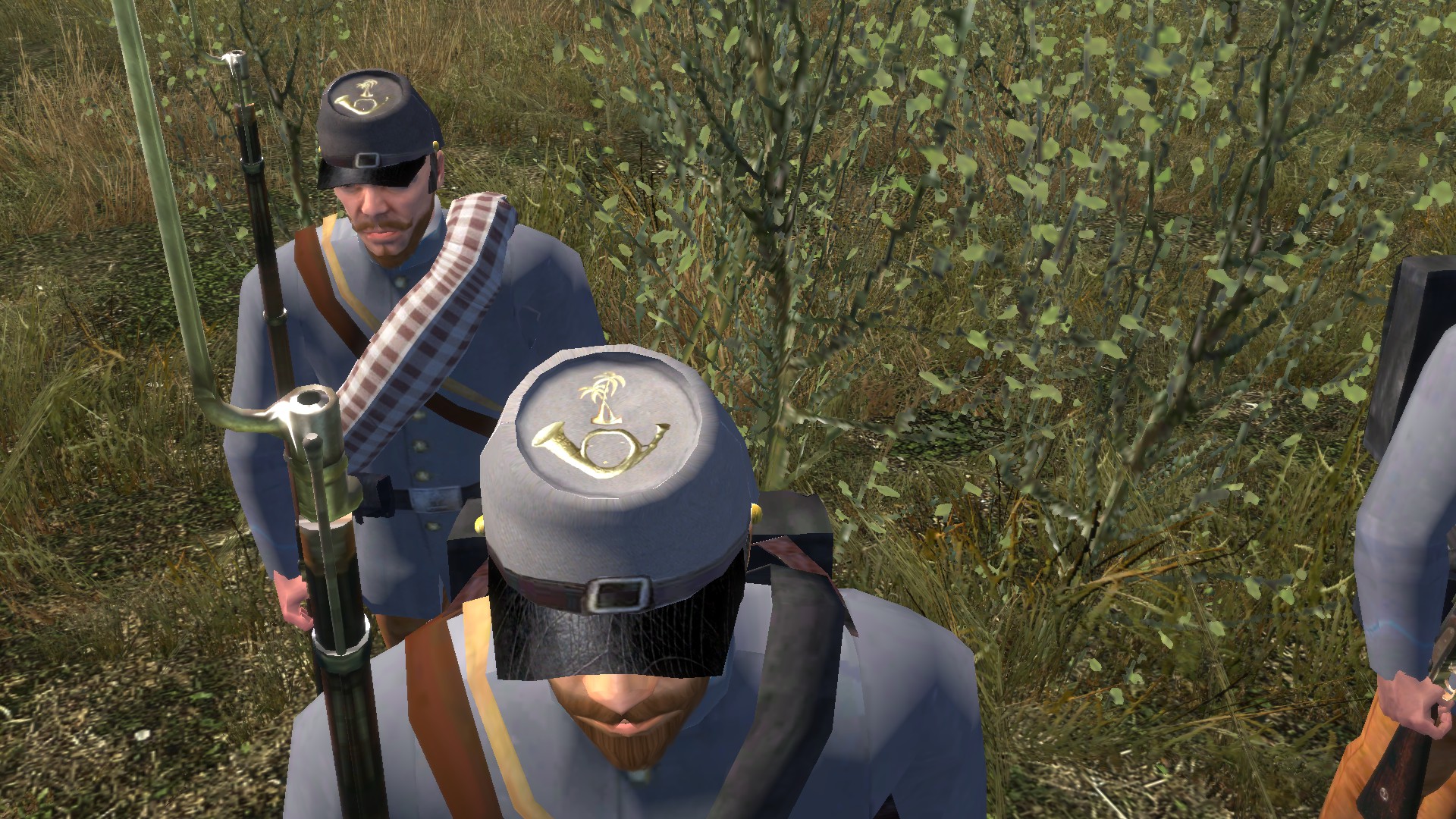
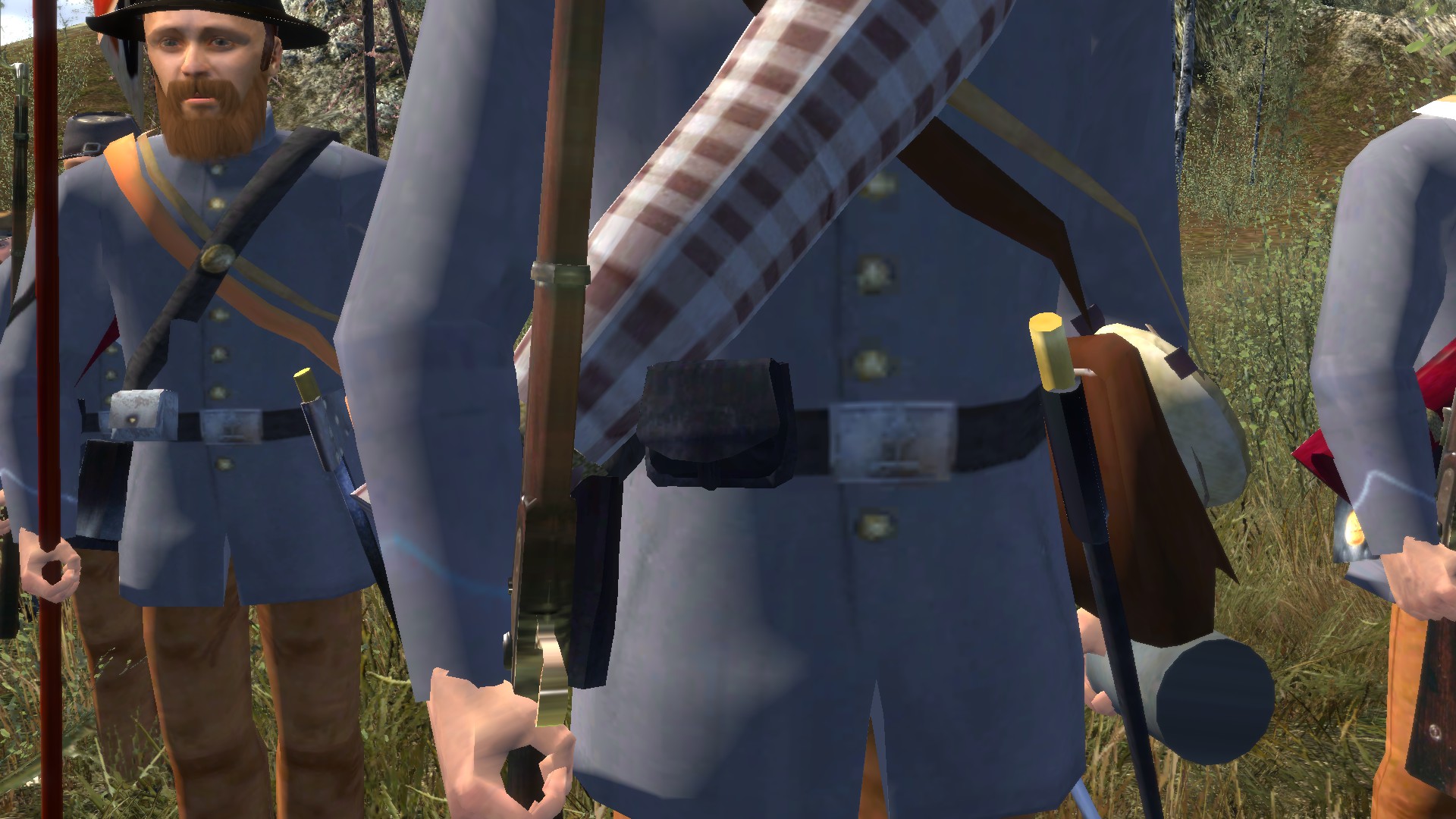
18th Alabama Infantry

The 18th Alabama regiment was organized at Auburn, Alabama, on September 4th, 1861. The regiment was ordered to Corinth in March 1862, and was there brigaded under General J.K. Jackson with the 17th and 19th Alabama regiments. The 18th Alabama fought the first day at Shiloh and engaged in the severe fighting which resulted in the capture of Union General Benjamin Prentiss' division, and was ordered by General Wheeler to carry the prisoners to Corinth. It did not take part the second day. After the battle, the regiment had lost 125 men killed and wounded out of 420 men engaged.
The 18th Alabama went on to fight at Farmington, Mississippi, and was prominent in the battle of Chickamauga. The 18th was terribly mutilated in this battle, losing 300 men killed and wounded, out of 500 men engaged, and 22 out of 36 officers. At Chattanooga, the regiment arrived near the Rossville Gap, and the 18th took positions as skirmishers in part of the old breast works the Union troops had abandoned after the Battle of Chickamauga. The brigade was then split into several segments for deployment along the ridge and at Rossville Gap. About 45 minutes following their arrival, Union troops appeared on the ridge, and when the 18th gave way at the skirmish line, Clayton's men had attempted to form in line of battle. However the 36th and 38th Alabama regiments broke and ran through the brigade line, creating much confusion.
The 18th Alabama was engaged at Missionary Ridge on November 25th, 1863, and lost about 90 men in the battle, mostly captured, and their Hardee pattern flag was captured by the 13th Illinois. It participated in all the subsequent battles of the army of Tennessee and was distinguished in the Dalton and Atlanta campaign. After spending the winter at Dalton, it began the Dalton-Atlanta campaign with 500 effective men, and fought all the way to Jonesboro, losing constantly in killed and wounded, but with no severe loss at any one place. By the end of the campaign, it had lost nearly half its number. The regiment went on to fight in the battles in front of Dalton, and then Rocky Face from May 7th to the 12th. With 2 killed, 4 wounded, and 7 missing, the 18th Alabama regiment left Rocky Face Mountain the night of May 12th.
The 18th arrived at Resaca the evening of May 13th. On the 14th they commenced entrenching, and the regiment was engaged on the 14th and 15th in advancing their lines. In charges against the 5th Indiana Light Artillery, the battle flag with crossed cannons and battle honors were captured by the 5th Indiana. The regiment left the night of the 15th with 1 officer and 5 men killed, 41 wounded, and 27 missing. The 18th arrived at Cassville on the evening of May 17th, and the next day three companies including Company G were sent out as skirmishers. They were engaged for about an hour when they finally retired, losing 33 men missing. The regiment left Cassville the evening of the 18th and marched to New Hope Church.
At 10:00 a.m. on May 25th, the 18th Alabama with 2 other regiments threw up log breastworks, while the 32nd Alabama and the 58th Alabama went to hold the road from the enemy. Clayton ordered Captain Darby of the 18th Alabama to move forward with a line of skirmishers replacing the 32nd and 58th Alabama. At 5:00 p.m. they were engaged for over two and a half hours. Eventually the skirmishers were driven back, and the Union soon made their appearance in force, engaging the whole line. At daylight on May 26th, the 58th Alabama relieved the 18th at the trenches. May 27th the 18th relieved the 58th in return at the trenches, the enemy again attacked Clayton's Brigade in the same position, but was repulsed. They withdrew the morning of May 28th, with 4 officers wounded, 4 men killed, 43 wounded, and 2 missing. On the 27th, the 18th Alabama regiment was under fire from sharpshooters and artillery, and lost 1 officer wounded, 2 men killed and 4 wounded.
The regiment went on to fight at Pickett’s Mill, Peachtree Creek, Atlanta, Jonesboro, and Lovejoy’s Station. The regiment went with General Hood into Tennessee, and lost about 100 at Franklin, most of whom were captured, and participated in the Battle of Nashville. When the army moved to the Carolinas in February 1865, the regiment was ordered to Mobile, and placed in the field works at Spanish Fort from March 26th to April 8th, 1865. The 18th Alabama participated prominently in the siege several weeks later, with some loss, and escaped when the defenses were evacuated. The regiment finally surrendered at Meridian, Mississippi on May 4th, 1865.
In the mod, the 18th Alabama Infantry are armed with the Pattern 1853 Enfield Rifle Musket and wear a slightly different uniform that is a lighter grey color, and their pants come in a variety of blue, light brown, and light grey. They are tenacious fighters and not to be underestimated; they can match Union regulars in a stand up fight and will charge bayonets against even the most veteran opponent. They can be found in the upgrade tree under the Army of Tennessee as an upgrade from the Confederate Veteran Volunteer Zouave. You will also notice the soldiers of the 18th Alabama will have a unique belt buckle.
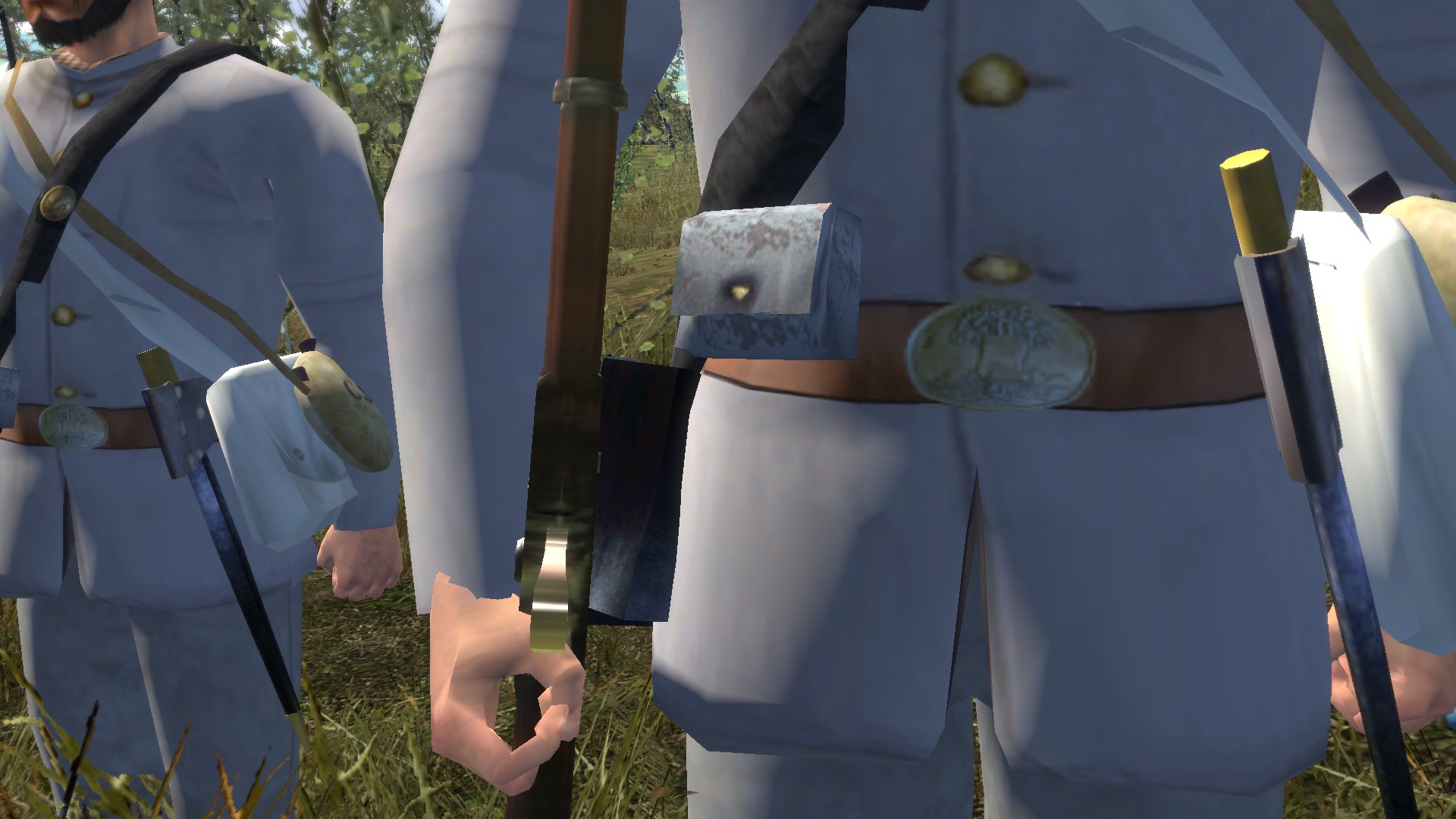
Native American Trackers
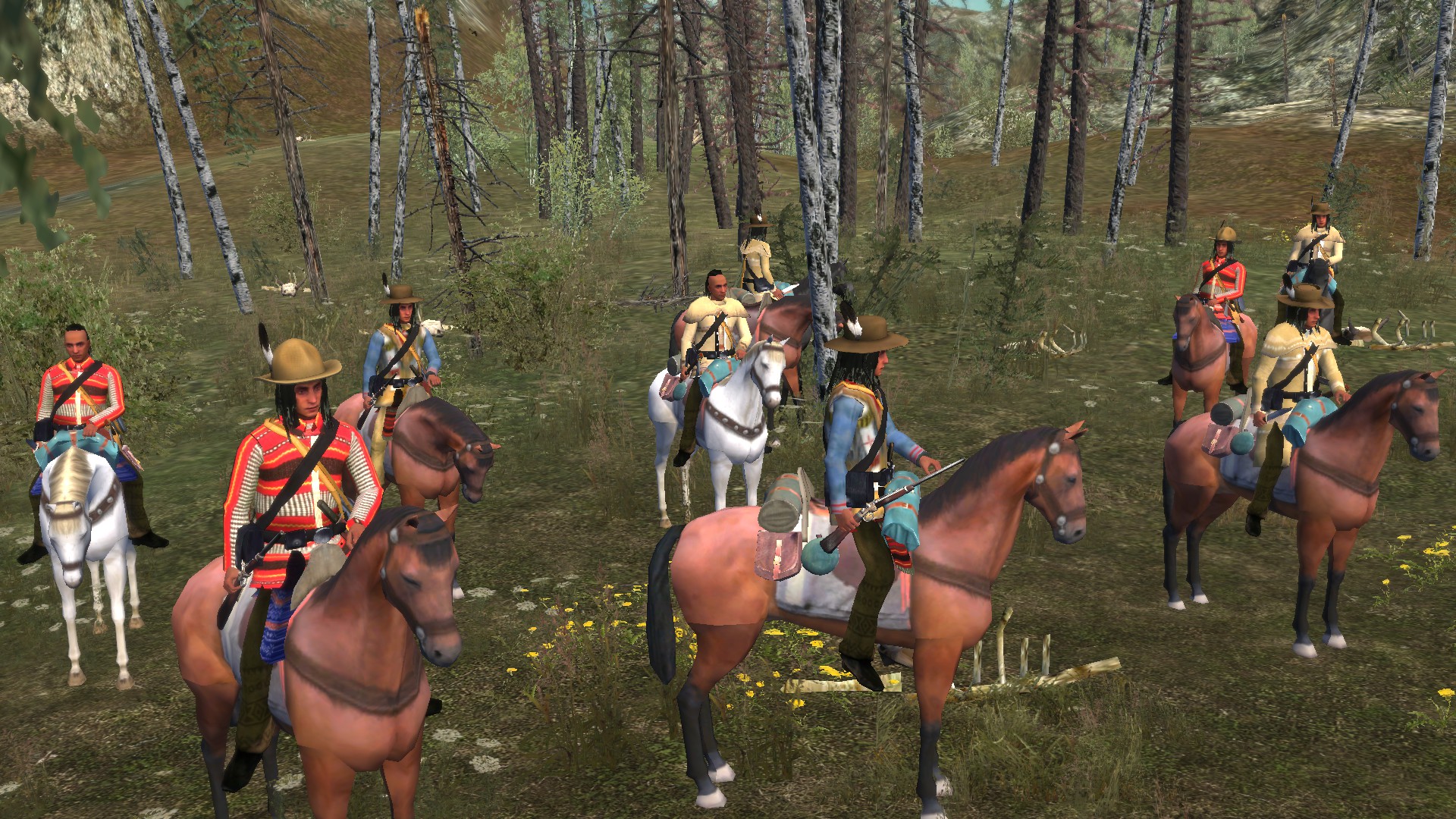
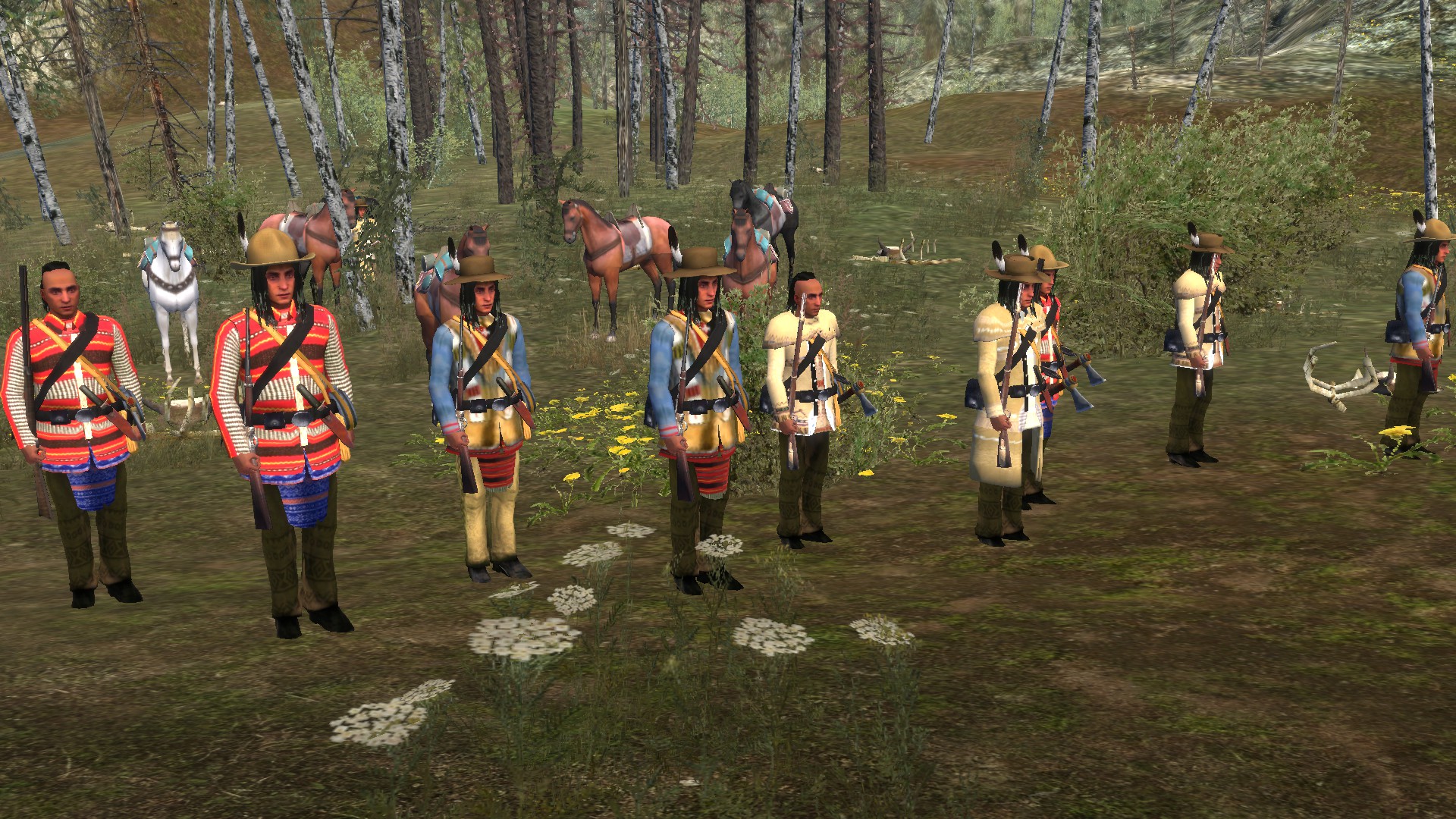
The Native American trackers are a new mercenary unit that is replacing the old generic mounted bodyguard units, and we have also added an entirely new class of dismounted trackers to the mercenary upgrade tree. Their skills are also increased so they should provide the party with a bonus to the relevant things, like tracking, spotting, pathfinding, etc. They use a variety of rifles and carbines, and are well suited to light infantry roles, picking enemies off from a distance, or scouting ahead of your main forces. In melee, the trackers will use knives or tomahawks.
New Scenes
We have worked very hard to overhaul the cities in the mod, and finally replace all the old medieval structures. Thanks to the hard work of Matsuri5, we were able to have an amazing set of unique buildings and landmarks that were crafted by him. Using historical maps as a reference, I have sculpted authentic scenes of the cities, closely following the road layouts, as well as trying to place the landmarks as close to their actual locations as possible. Since there are not really any maps of Native American cities, I have instead made a kind of generic village, based on artistic depictions of villages of the tribes that lived in those areas on the map.
Indianapolis
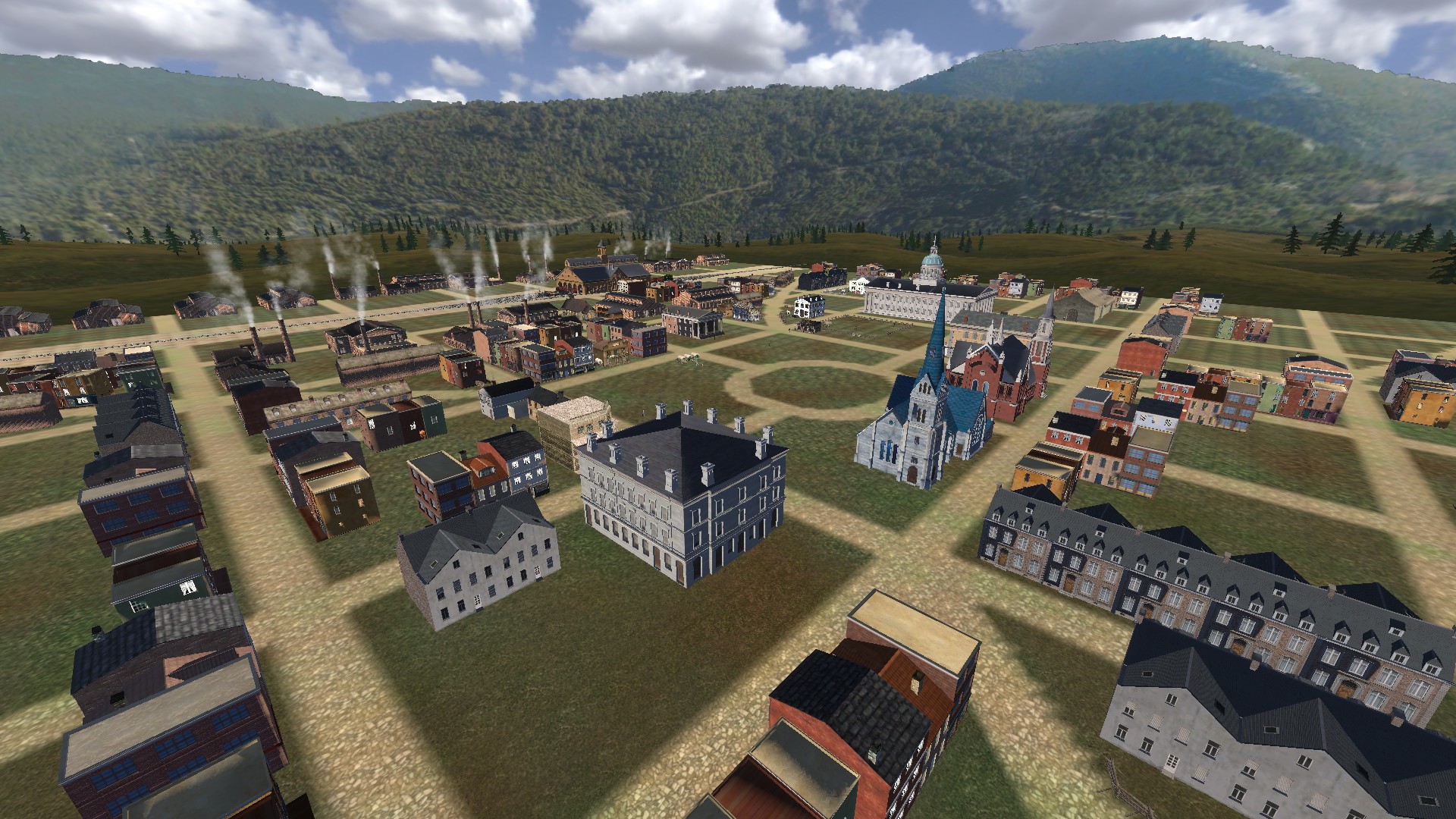
Indianapolis, the state capital of Indiana, was a major base of supplies for the Union during the Civil War. The city served as a gathering place for organizing troops, and became a major railroad hub for troop transport to Confederate territory. 24 military camps were established in the vicinity of Indianapolis, and in addition to this, a state-owned arsenal was established in the city in 1861, and a federal arsenal in 1862. Indianapolis sent an estimated 4,000 men into military service, of which an estimated 700 of whom died during the war. After the war, increased wartime manufacturing and industrial growth ushered in a new era of economic prosperity, and Indianapolis's population increased from 8,000 in 1850 to 45,000 at the end of 1864. The Civil War era ushered in the beginning of the city's urban, industrial development, its connections to an expanding railroad network, and the growth of local charitable organizations.
Indianapolis is actually one of the most recently completed scene overhauls in the mod, and Matsuri5 has constructed a number of landmarks for the city as well, which were also all completed very recently.
Indiana Capitol
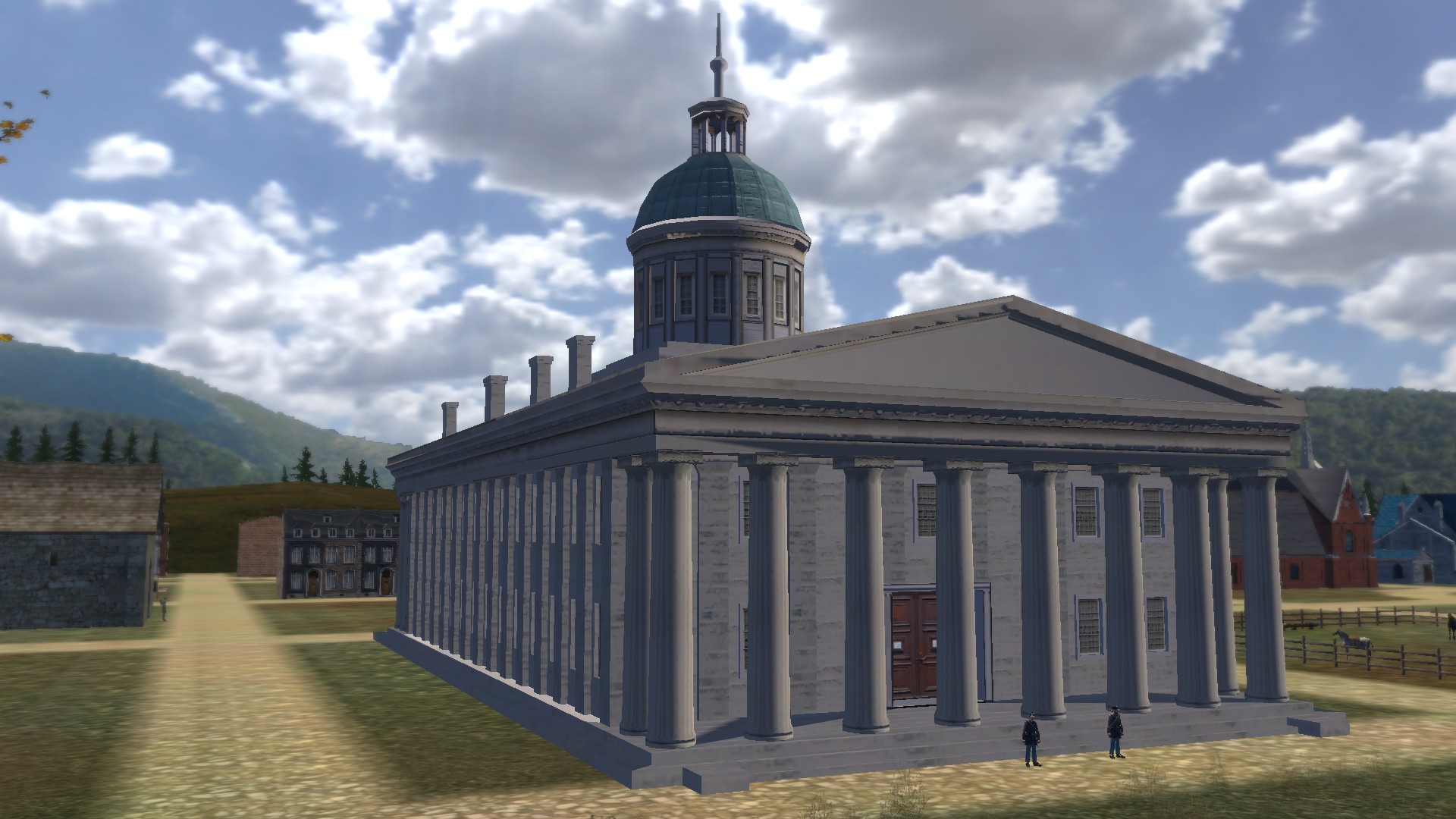
In 1831, the Indiana General Assembly approved construction of a new State House, and Commissioner James Blake offered a $150 prize to the architect who could design the best state house. The firm of Ithiel Town and Alexander Jackson Davis created the winning design, with a plan for a structure that was inspired by the ancient Greek Parthenon. The building looked very much like the Parthenon except for a large central dome. Town and Davis was awarded the contract to construct the building, and completed it ahead of schedule in 1835. The building was the third state house of Indiana and was the site of many great events in history, including a display for the body of Abraham Lincoln after he was assassinated and brought around the country on his funeral procession. Unfortunately, the building was beginning to become decrepit by the 1860's, with it's limestone foundation beginning to fail. The ceiling collapsed in 1867, and despite a debate in 1873 about how to preserve the building, no solution was found, and therefore the building was condemned and finally demolished in 1877.
Union Station
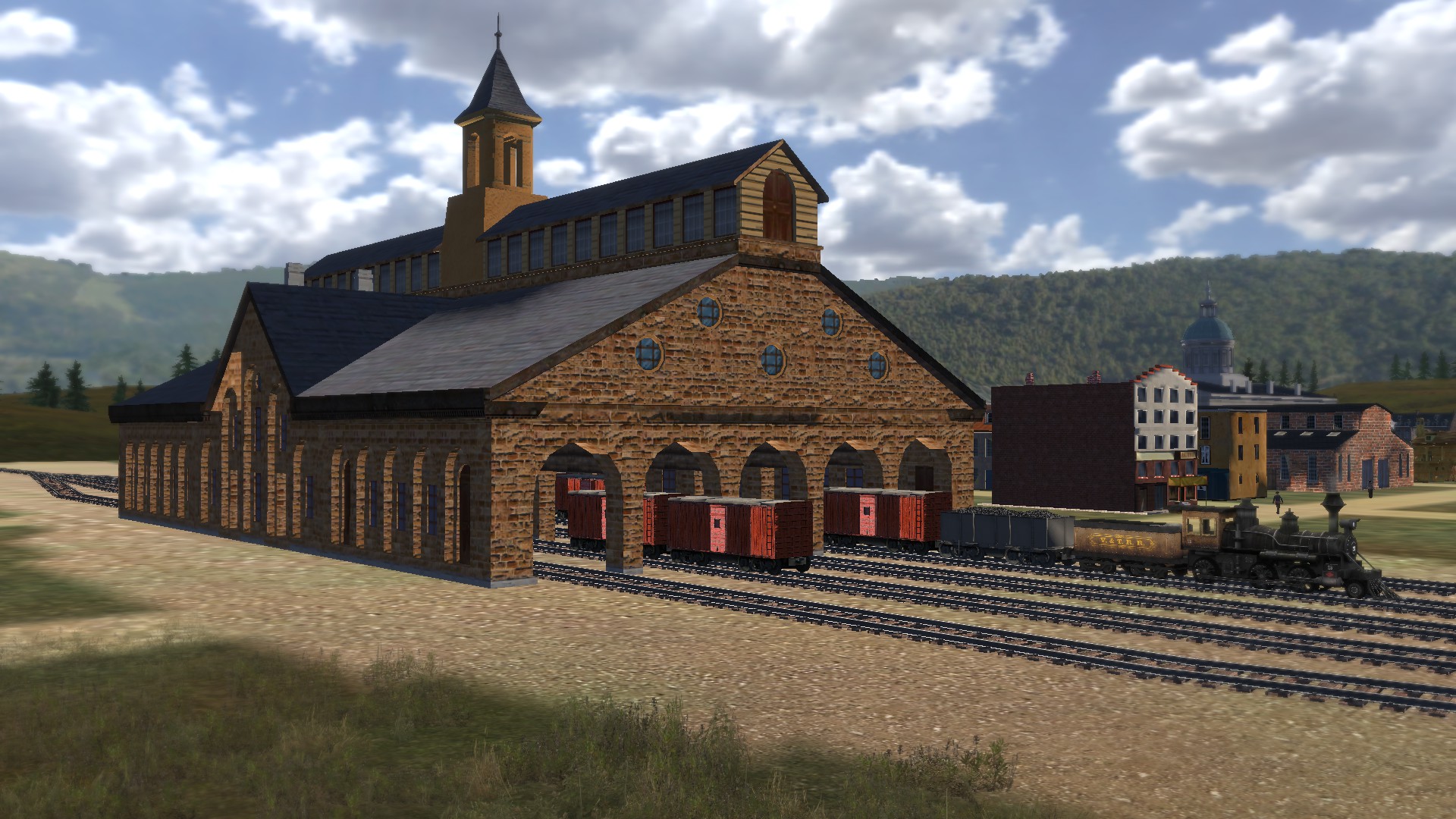
The first railroad to reach Indianapolis was the Madison and Indianapolis Railroad, which began service there in 1847. Competing railroads began connecting Indianapolis to other locations, but each had its own station in various parts of the city, creating problems for both passengers and freight. Many cities at the time had the same problem, but in 1848, Indianapolis became the first city in the world to solve this problem by devising a union station, where the tracks and facilities are shared by two or more separate railway companies, allowing passengers to connect conveniently between them. The station building opened on September 20th, 1853, operated by the Indianapolis Union Railway Company. Built for $30,000, the brick depot had five tracks going through it to serve passenger trains, with another two tracks outside of the building for freight trains. For a few months in 1864, the Union Depot was the place of employment for young Thomas Edison, who worked there as a telegraph operator. It was here that he developed his first invention, the automatic repeater telegraph, which allowed him to transcribe the messages sent over the news wires much faster than before. This earned him a pay raise, but he eventually left Indianapolis, likely because his work on his inventions was conflicting with his work as a telegraph operator.
Plymouth Church
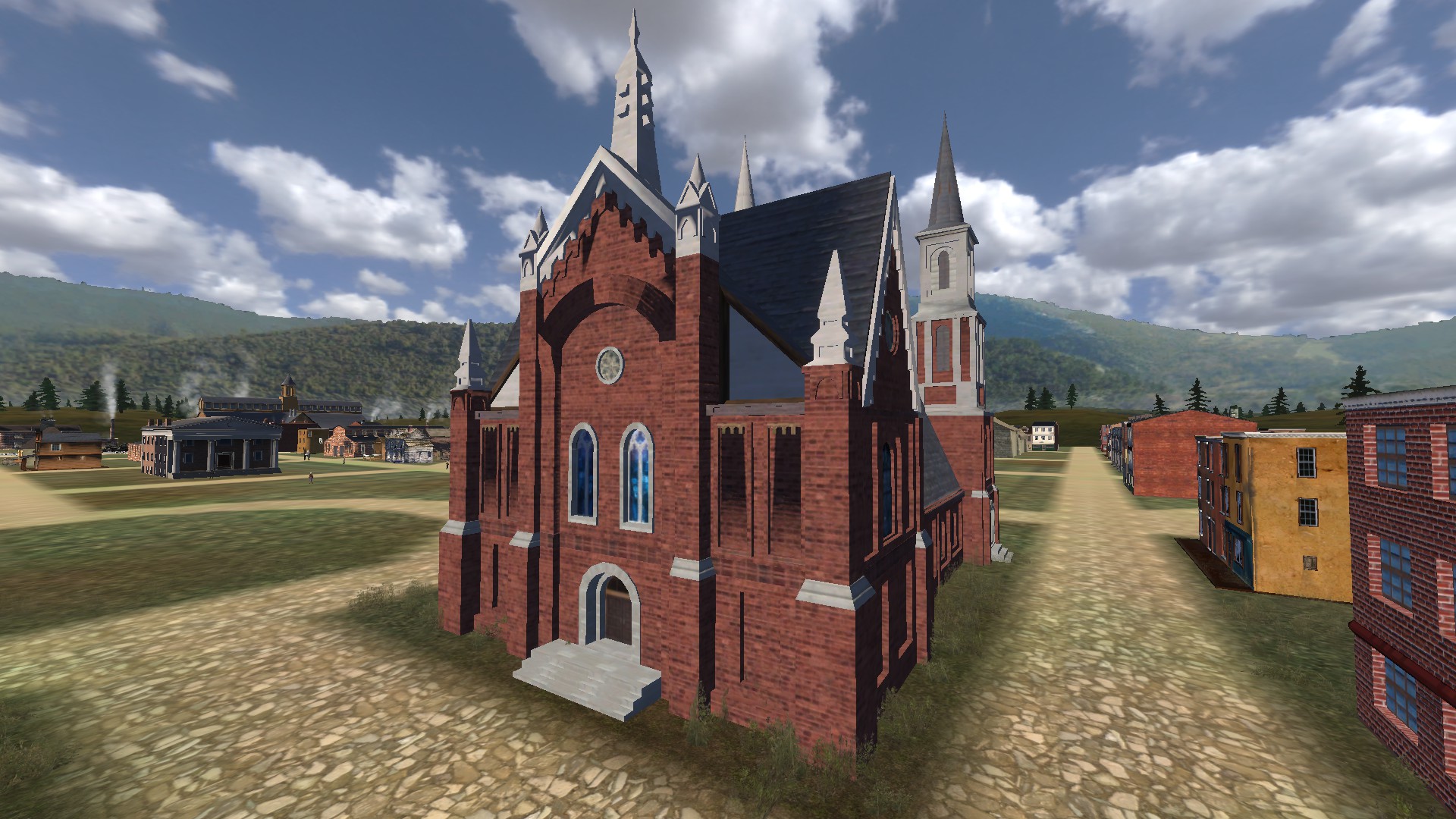
The Plymouth Congregational Church was originally organized in August 1857, and their first church on the circle was erected in 1858 and dedicated on September 4th, 1859. The main room held 650 opera chairs with an additional 340 seats in the balcony. Gas lighting was used at night, and steam heat warmed the building. There were two floors in the front part of the building with three rooms on the south side below, designed for the charity societies, and two on the north side for the uses of the church. There was a large room upstairs, and there was also a Sunday school room with a separate apartment for infants. Plymouth Church was a venue for famous people, as well as a hub of social activity outside Sunday services. Their house of worship frequently had guest speakers, musical performances, and hosted the meetings of numerous local organizations.
Christ Church Cathedral
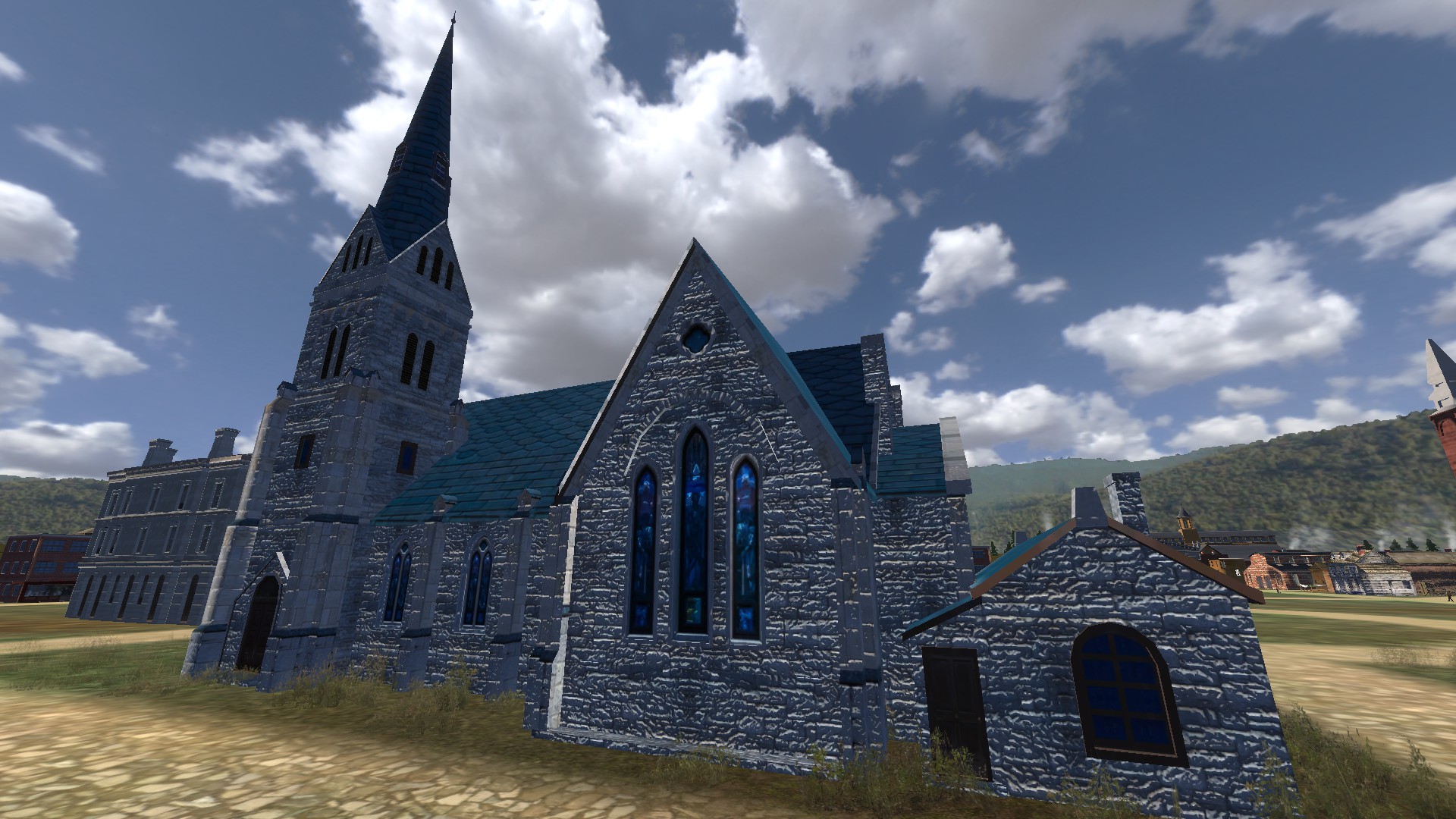
In 1838, the Episcopal parish of Christ Church built a simple chapel a year after their congregation had formed. In 1857, the church hired William Tinsley, an Irish immigrant, to design the present stone Early Gothic Revival style church, which opened for services the next year. Christ Church Cathedral is the oldest religious building that is still in continuous use in the city of Indianapolis, and its Episcopal congregation is the oldest in the city. Christ Church Cathedral is the only one remaining of the five major Protestant churches that were located on the circle during the Civil War period, when the circle was then known as Governor's Circle.
Old Courthouse and Post Office
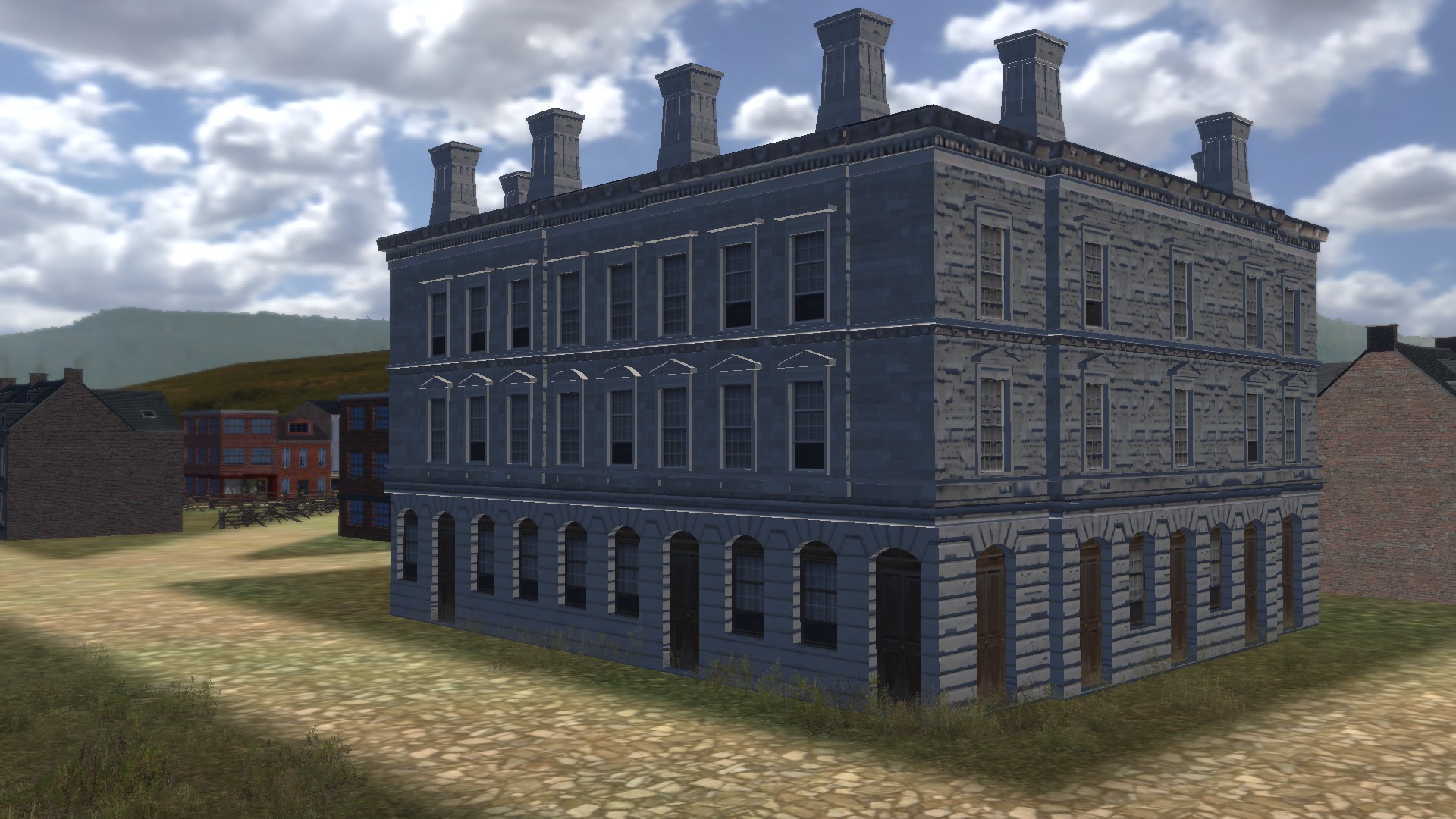
The design and construction of this building was prepared and overseen by A.B. Young, A.B. Mullett, and Francis Costigan. The original old building, popularly known then as the Post Office Building, was completed in 1860 at a cost of $166,240. The building was three stories tall, built in the Italian Renaissance style, with limestone walls and a fireplace in every room. The post office occupied the ground floor and basement, while the second and third stories had offices for the U.S. assessor, collector, district attorney, marshal, clerk, judge, and a courtroom could be found as well. The Court House was the site one of the most famous treason trials of the Civil War, a case that ended up in the Supreme Court as Ex parte Milligan, in which the justices ruled that no civilian could be tried by a military court when a civilian court was available.
Circle Hall
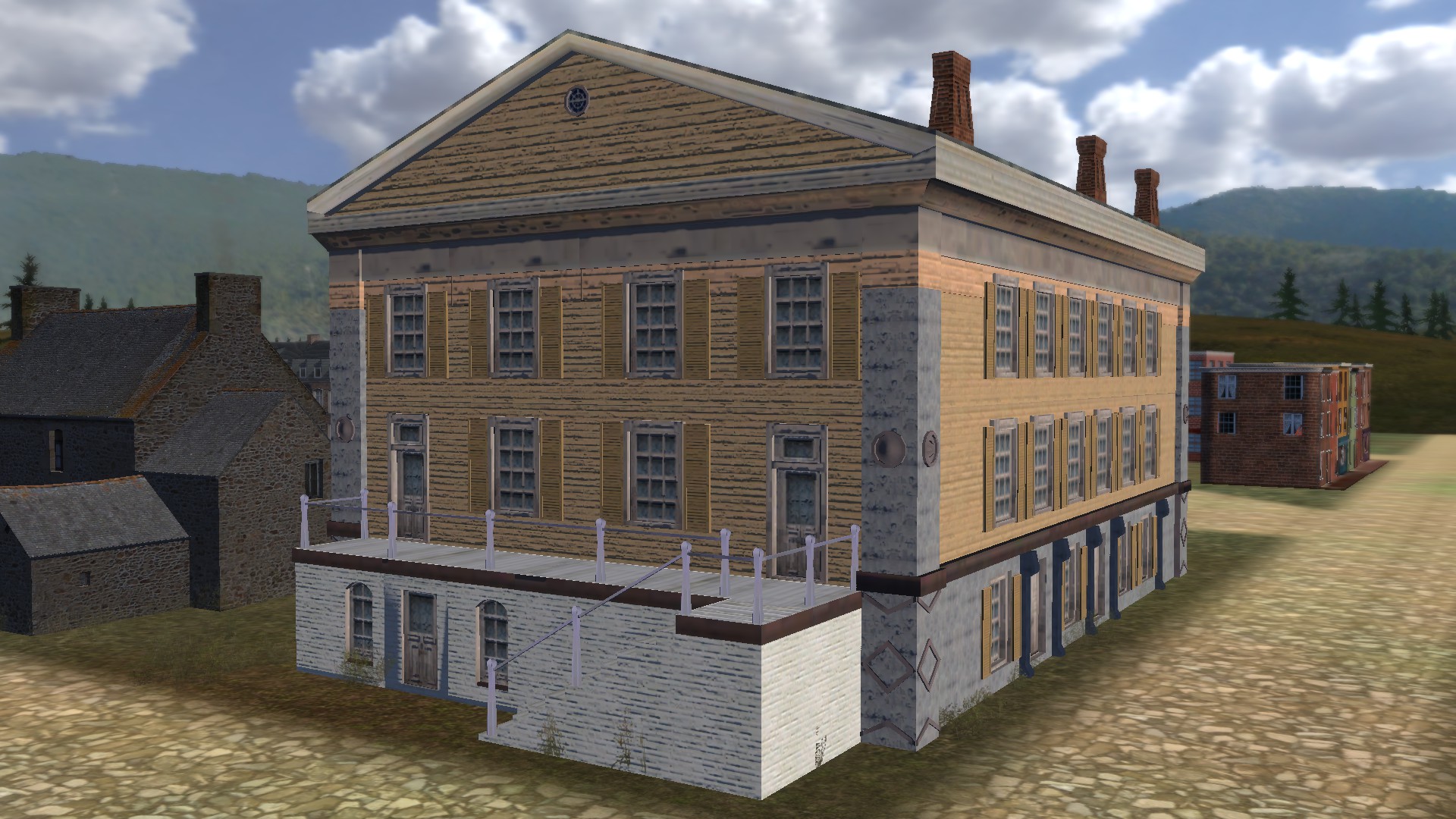
The Circle Hall was built around 1840 and housed the Second Presbyterian Church until 1867. It then housed the Indiana School of Art in 1891, until the building was demolished in 1897.
Jackson
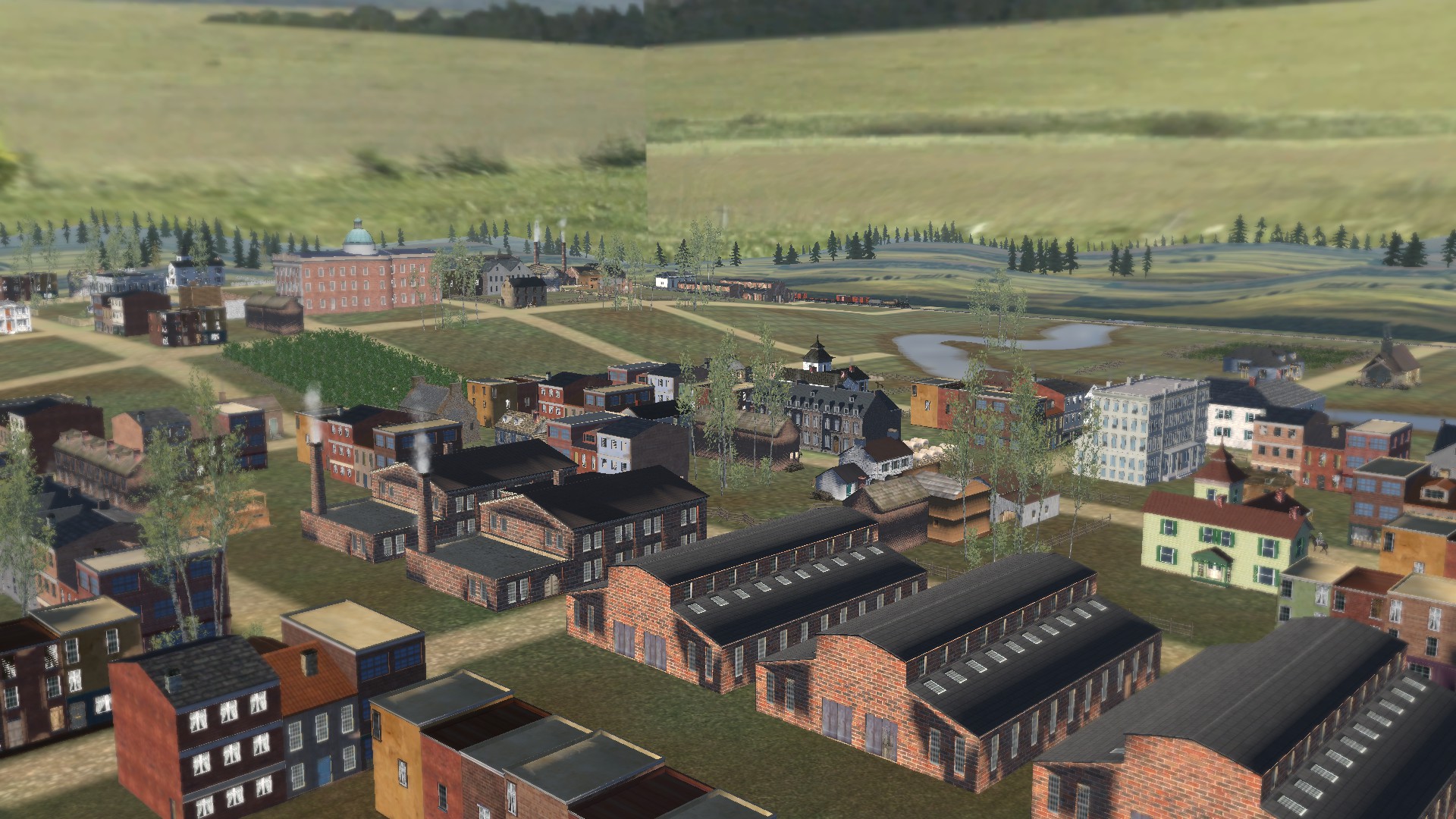
During the Civil War, Jackson, Mississippi became a strategic center of manufacturing for the Confederacy. Union forces captured Jackson during two battles in 1863, with one being before the fall of Vicksburg and the other afterwards. Union forces won the first Battle of Jackson on May 13th, 1863. The next day, Union troops under the command of General William T. Sherman burned and looted key facilities in Jackson. Union forces then turned west and engaged the Vicksburg defenders at the Battle of Champion Hill, and began their siege of Vicksburg soon after their victory. Confederate forces began to reassemble in Jackson in preparation for an attempt to break the Union siege of Vicksburg. In early July of 1863, Confederate forces marched out of Jackson , but unknown to them, Vicksburg had already surrendered on July 4th, 1863. Upon learning that Vicksburg had already surrendered, the Confederates retreated back into Jackson, and Union forces began the siege of the city. On July 16th, 1863, Confederate forces slipped out of Jackson during the night and retreated across the Pearl River.
Union forces completely burned the city after its capture the second time. The city was called "Chimneyville" because only the chimneys of houses were left standing. Because of the siege and following destruction, few antebellum structures have survived in Jackson. A few of these surviving landmarks, and some which that are no longer with us, have been recreated for the mod.
Old Mississippi State Capitol
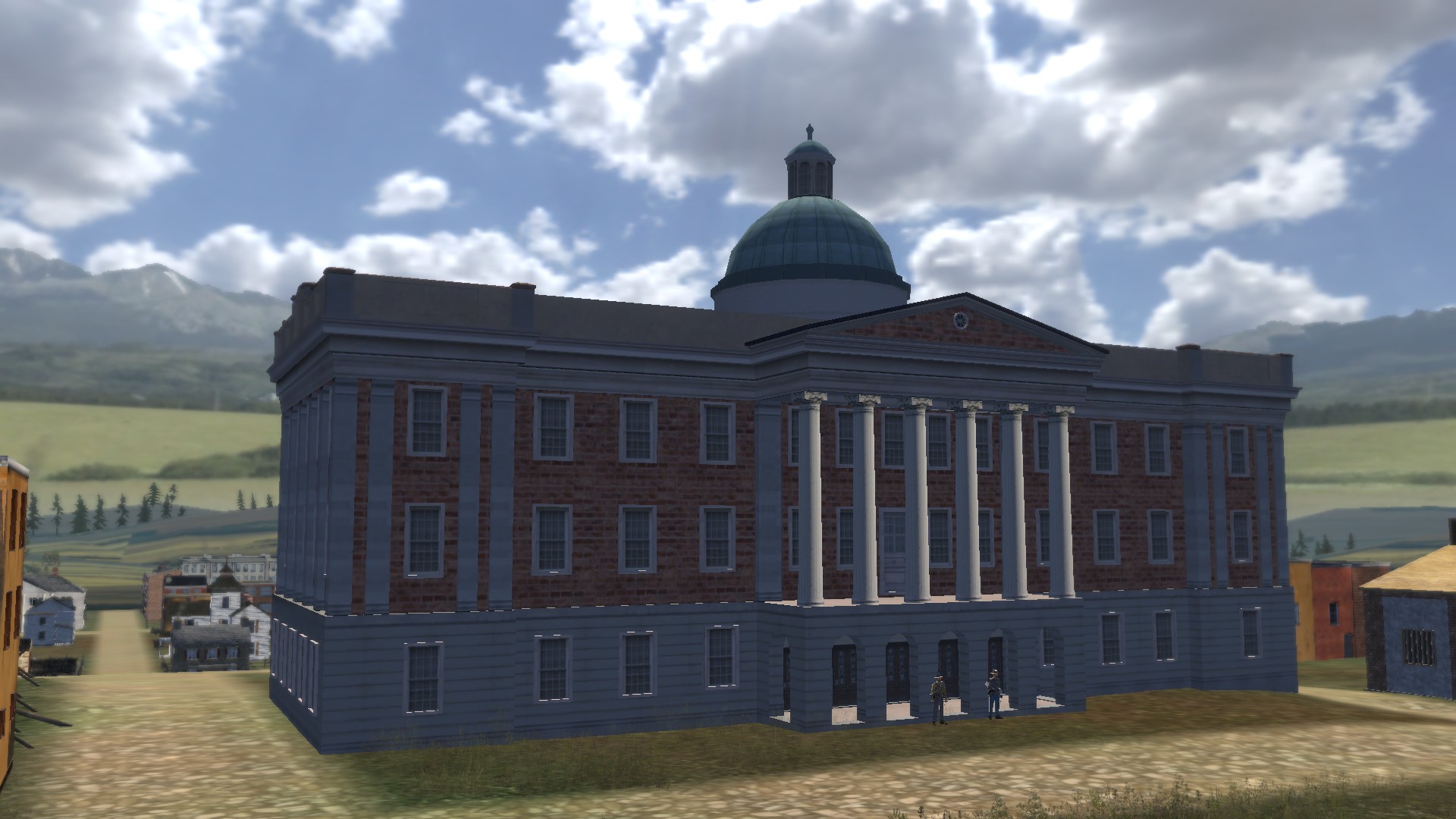
The Old State Capitol served as the Mississippi statehouse from 1839 until 1903. Although construction had started in 1833, there were problems with the architect and substandard materials. William Nichols replaced the original architect, John Lawrence, in 1836 and oversaw completion of the 3-story building in 1840. The exterior of the building was composed of brick, limestone, and stucco, and a copper rotunda dome extended 94 feet (29 m) above the first floor. During the Civil War, the old state capitol was the site of the passage of an ordinance of secession in 1861, and the Constitutional Convention of 1865.
Mississippi Governor's Mansion
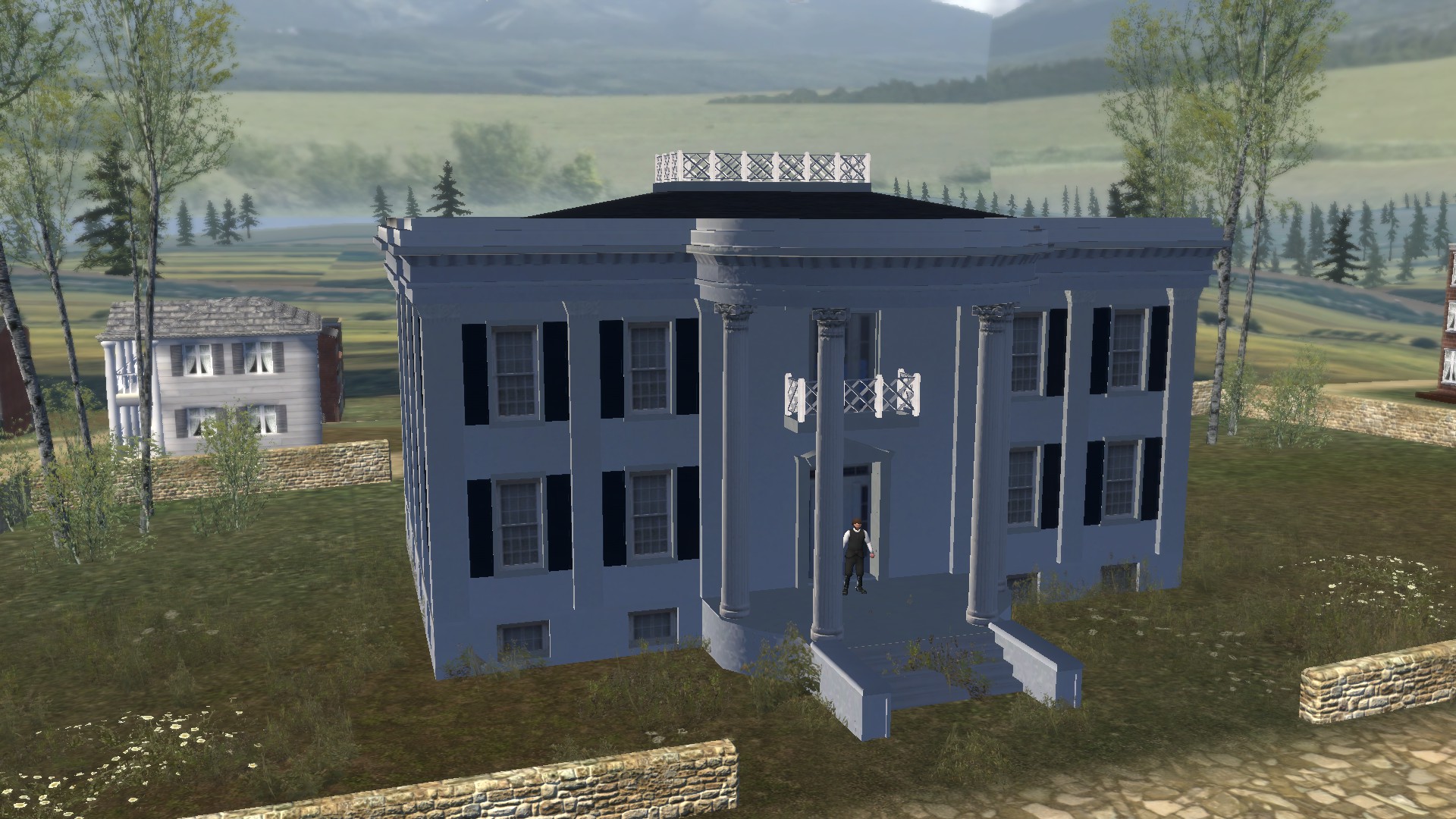
The Mississippi governor's mansion was designed by William Nichols, who was at the time the state architect. Nichols was also supervising the construction of what is now the Old Mississippi State Capitol during the same time. Construction began in 1839 and completed in 1841, with it's first occupant being Governor Tilghman Tucker in 1842. During the 1860's, the building was fitted with gas lighting, which resulted in damage to woodwork and plasterwork, and some of the wooden fireplace surrounds were replaced by marble ones. The mansion has been used continuously as the governor's residence, except during periods of renovation. It is the second oldest continuously used governor's residence in the country, with the only other example of longer use being that of the state of Virginia.
Bowman House Hotel
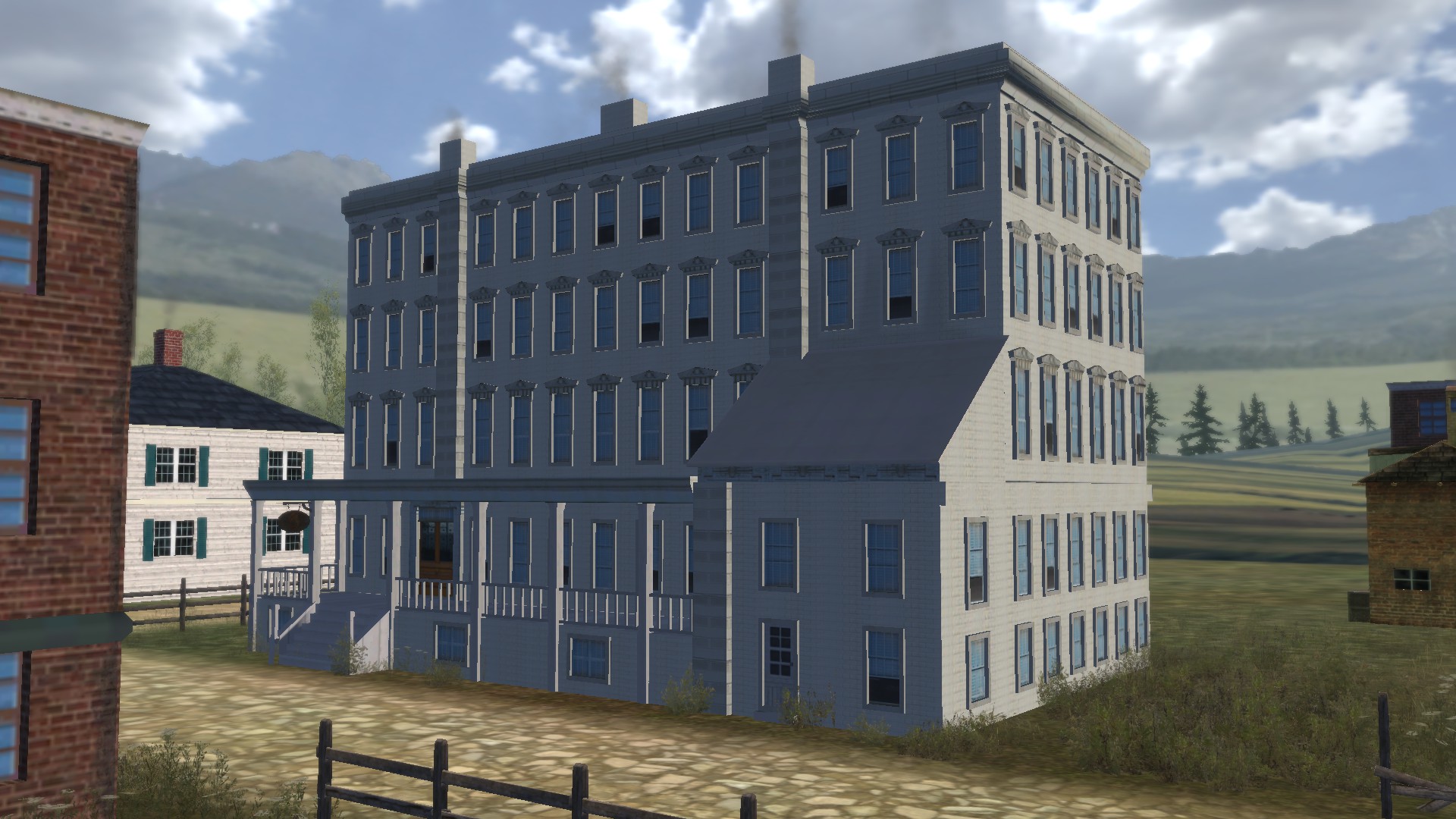
The Bowman House was built in 1857 and was the site of frequent political and social events. Andrew Jackson stayed there during his visit to the city in 1840, and it served briefly as headquarters for both Union and Confederate armies during the Civil War. General Ulysses S. Grant stayed at the Bowman House when Union troops took control of Jackson in 1863, and the Bowman House later burned down on June 9th that same year.
Tallahassee
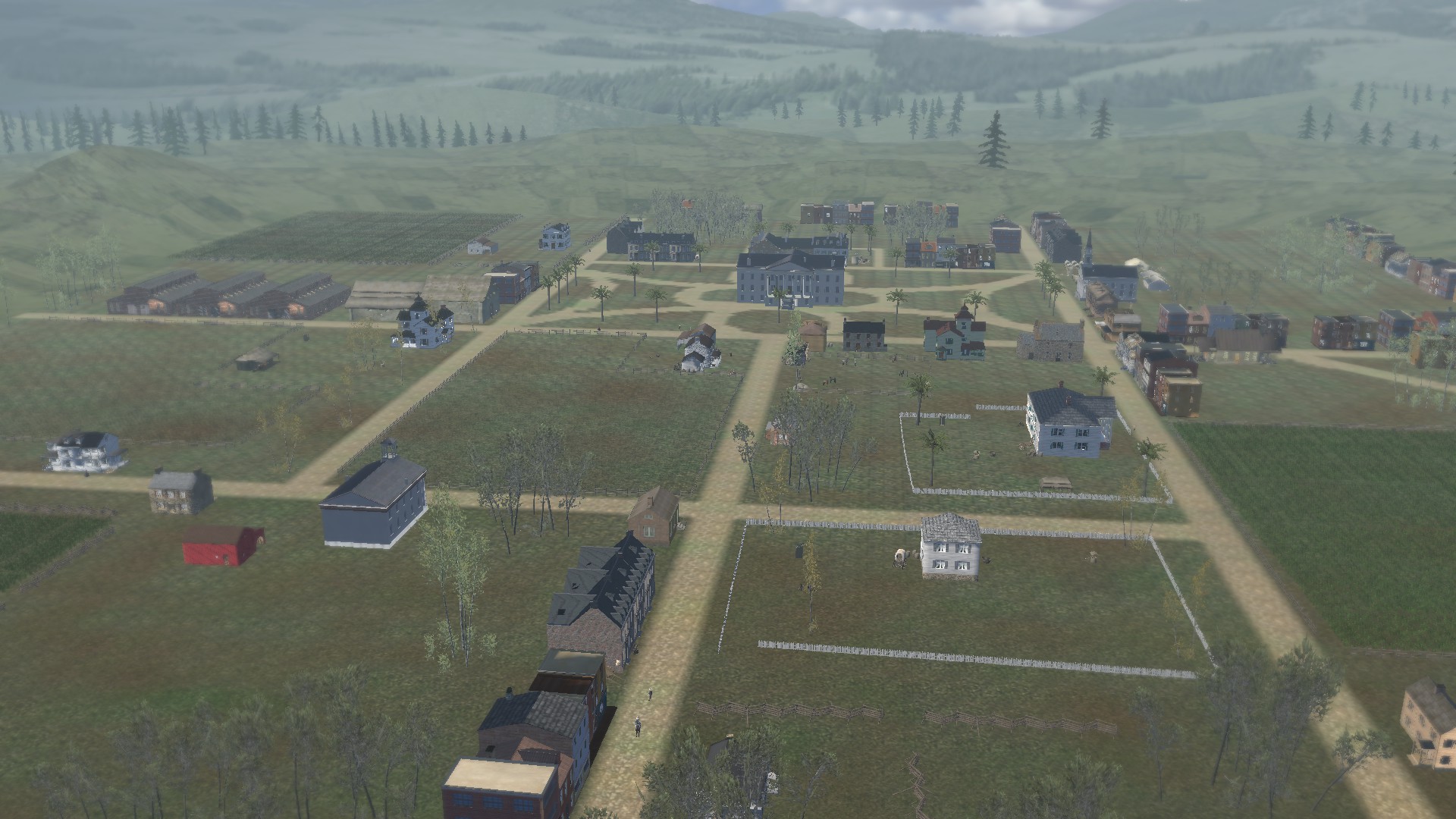
During the American Civil War, Tallahassee was the only Confederate state capital east of the Mississippi River not captured by Union forces, and the only one not burned. Tallahassee was in the heart of Florida's Cotton Belt, and was the center of the slave trade in Florida. After the Civil War, much of Florida's industry moved to the south and east, and with the end of the legal practice of slavery in America and the rise of free labor, the profitability of the cotton and tobacco trade was reduced. Citrus, lumber, naval stores, cattle ranching, and tourism, all became the state's new major industries. Many former plantations in the Tallahassee area were purchased for use as winter hunting preserves by wealthy northerners.
This scene includes several famous landmarks.
Florida State Capitol
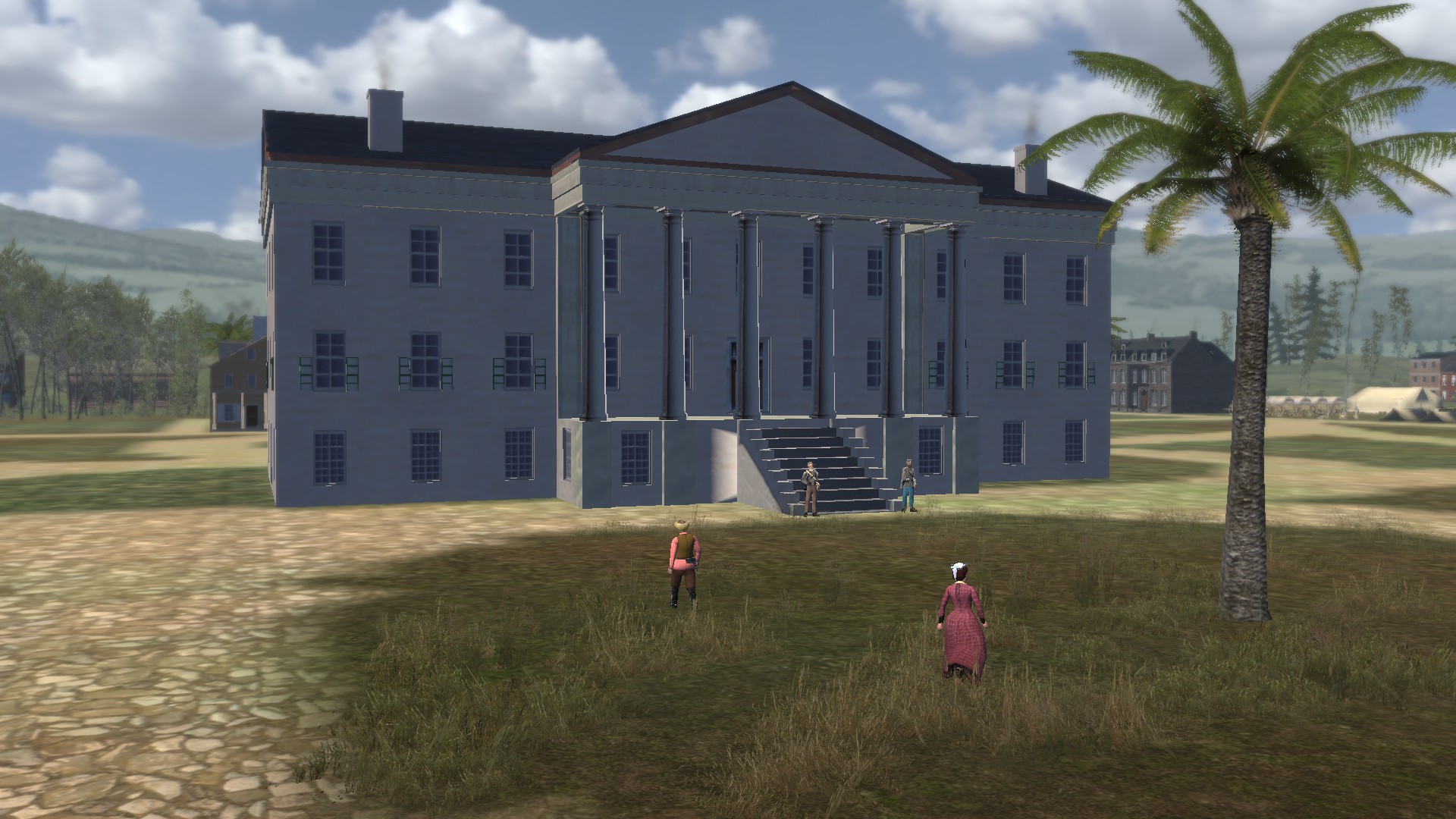
As Florida moved toward statehood, there arose a demand for a suitable state house. On March 3rd, 1839, Congress appropriated $20,000 for the construction of a new building, and the old state house was immediately demolished. Florida's government temporarily moved into rented quarters, and builders commenced work on the third capitol in 1839. The brick structure was completed by 1845, and this structure still remains the core of the Old Capitol. The Capitol remained virtually unchanged during the Civil War, since Tallahassee was the only Confederate capital east of the Mississippi River that avoided capture by federal troops.
Brown's Inn
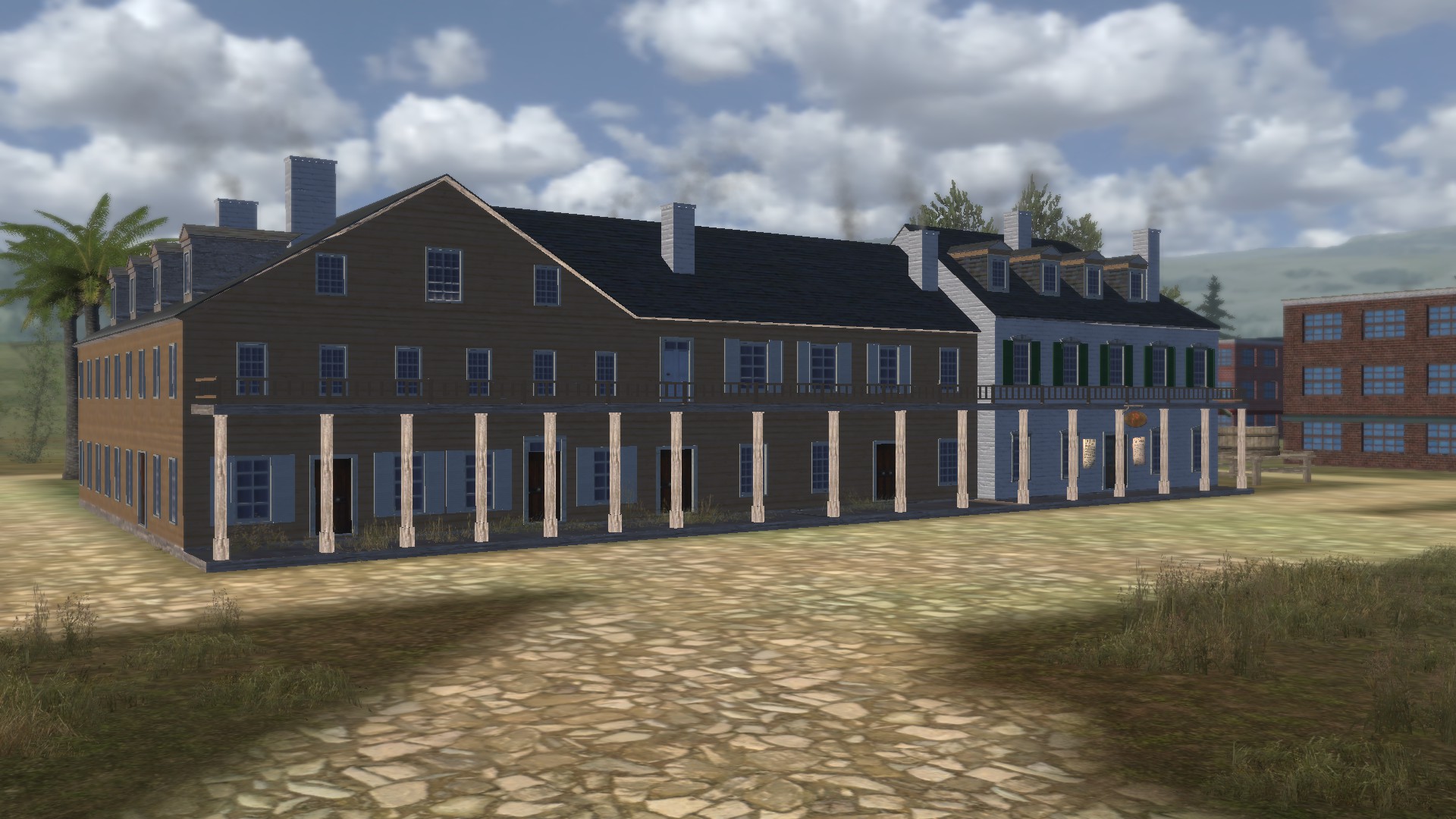
The hotel was built by Thomas Brown, the second governor of Florida, as Brown's Inn in 1834. It was known as The City Hotel in 1839, and The Adelphi in 1840. It later became the Morgan Hotel in September 1884, but was destroyed by fire in 1886.
First Presbyterian Church
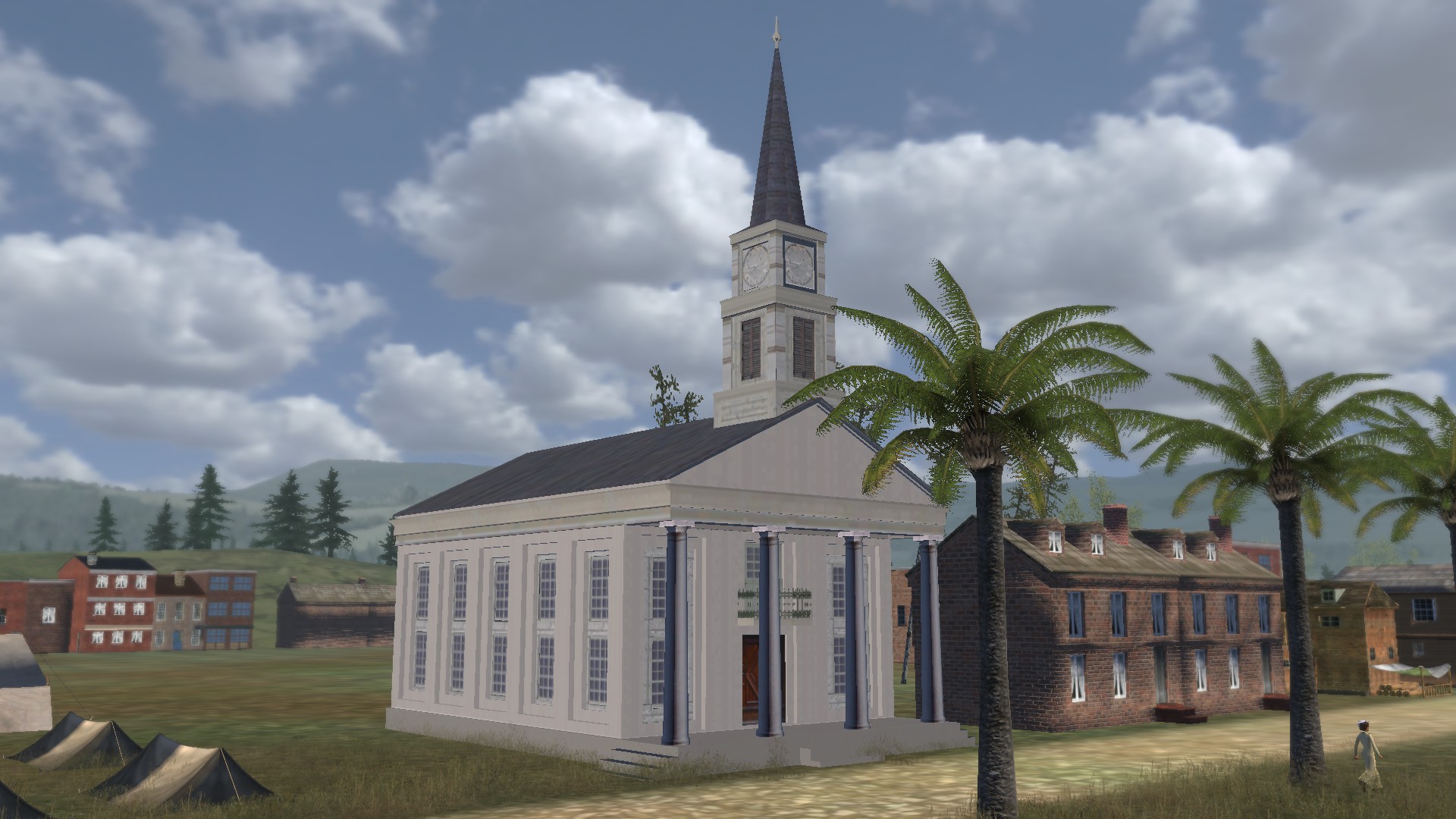
The First Presbyterian Church is the oldest public building in Tallahassee that is still in continuous use. A committee from the Georgia Presbytery composed of the Reverends Joseph Stiles, Horace Pratt and Nathaniel Pratt held a "protracted meeting" late in 1832, and on November 4th of that year, they organized a Presbyterian Church. In June 1835, the congregation asked for bids to erect a brick building, and three years later it was finished and dedicated on Sunday, May 13th, 1838. The final building costs totaled $13,370.60, being financed by the sale of pews. In it's early days of existence, the church was used when needed as a place of refuge for women and children when the men went out to guard the town against Indian uprisings. Though not visible from the exterior, rifle slots are built into the foundation walls. The steeple houses the original bell, which was the gift of Elder David C. Wilson. During the Civil War, the church's bell was offered to the Confederacy to be melted down to make cannons, but the offer was not accepted.
Trinity First Methodist Church
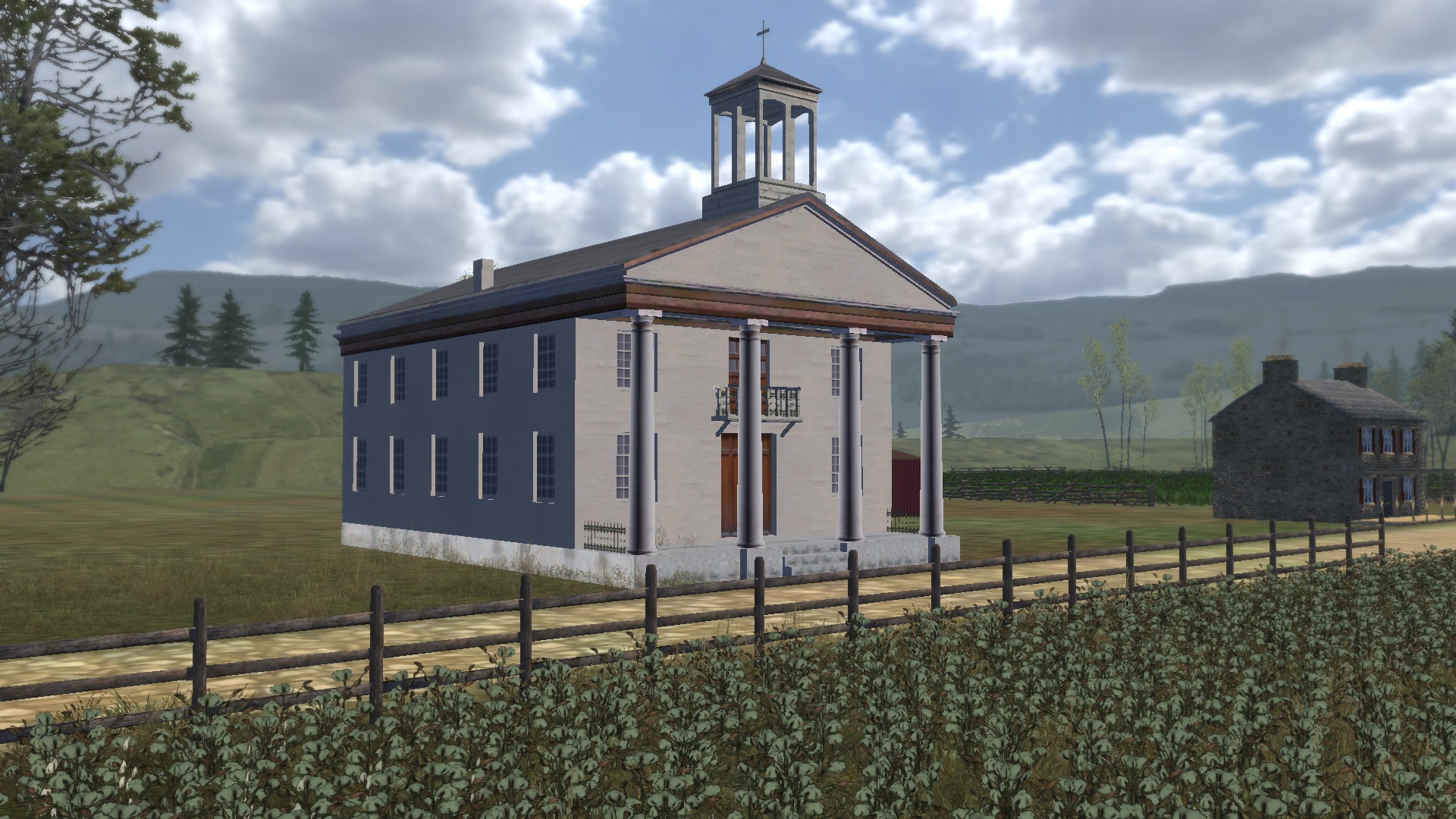
This is the first of three Trinity Methodist Church buildings there were built on this site. Constructed in 1840, the church was later demolished in 1892 to make way for the second church building. In 1865, more than 100 black members of the congregation walked out of the church because like many churches at the time, the congregations were segregated. These members went on to start Tallahassee's Bethel African Methodist Church. Although the First Presbyterian church is the city's oldest public building in continuous use, the Trinity First Methodist church will have seen 200 years of continuous use in 2024.
Wichita
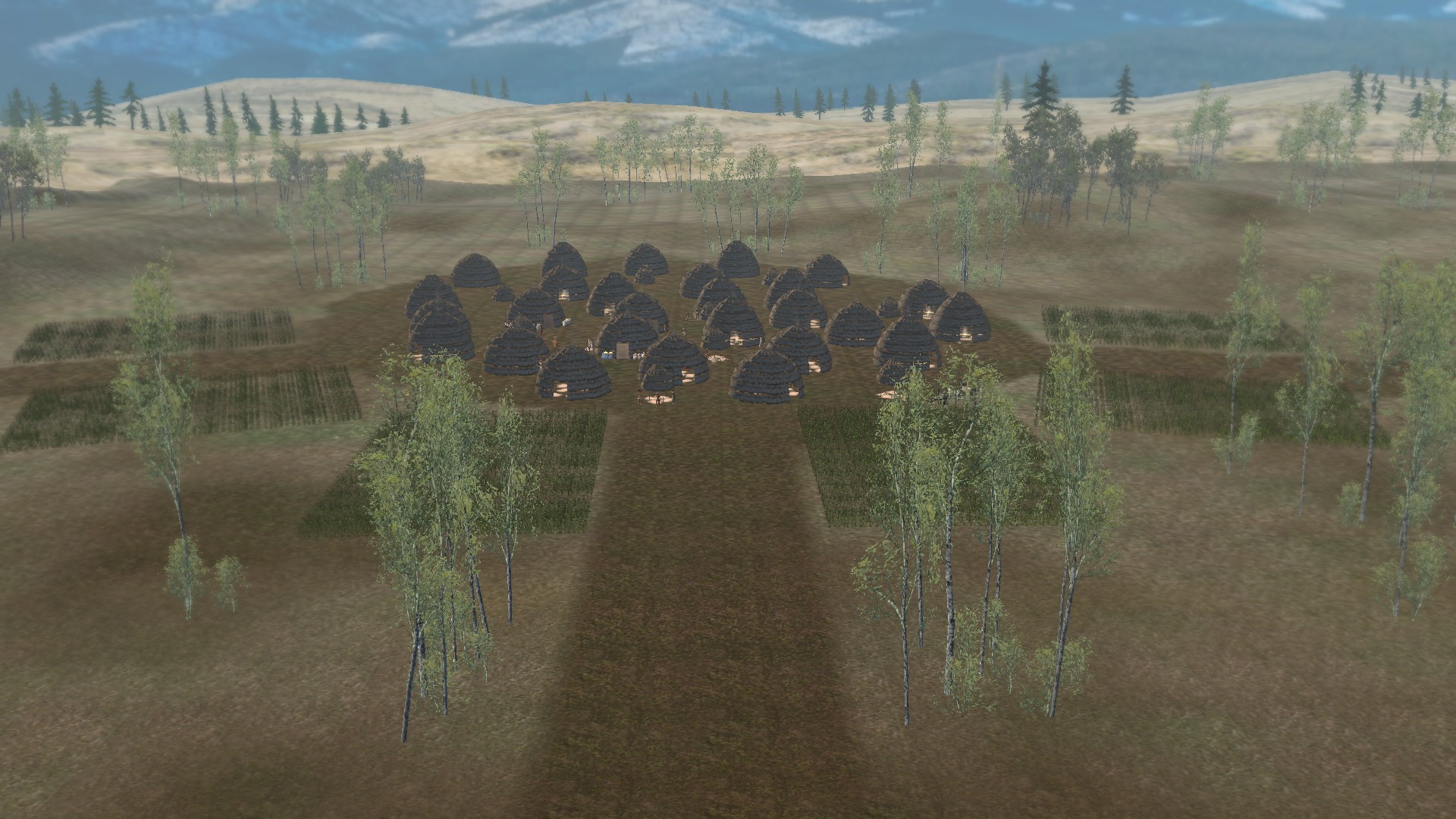
Since there are not really any maps of Native American towns and villages, I have instead made a kind of generic village, based on artistic depictions of villages of the tribes that lived in those areas on the map. Matsuri5 has created a great set of thatched Native American homes, and this gives their faction a bit of variety in their scenes, so that they are not all tipi villages. The scene is mostly based upon the following sketch, as well as other similar ones.
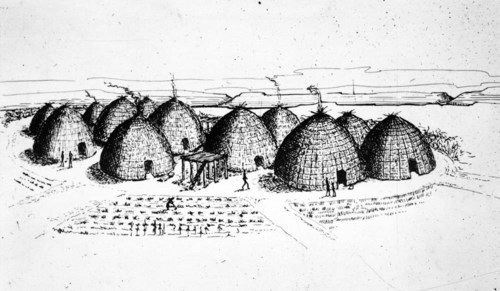
New Battlefields
The following new battlefield scenes were made to match their historical counterparts as closely as possible and to scale, and include several landmarks, which were also made possible thanks to the excellent craftsmanship of Matsuri5.
Lexington, Missouri
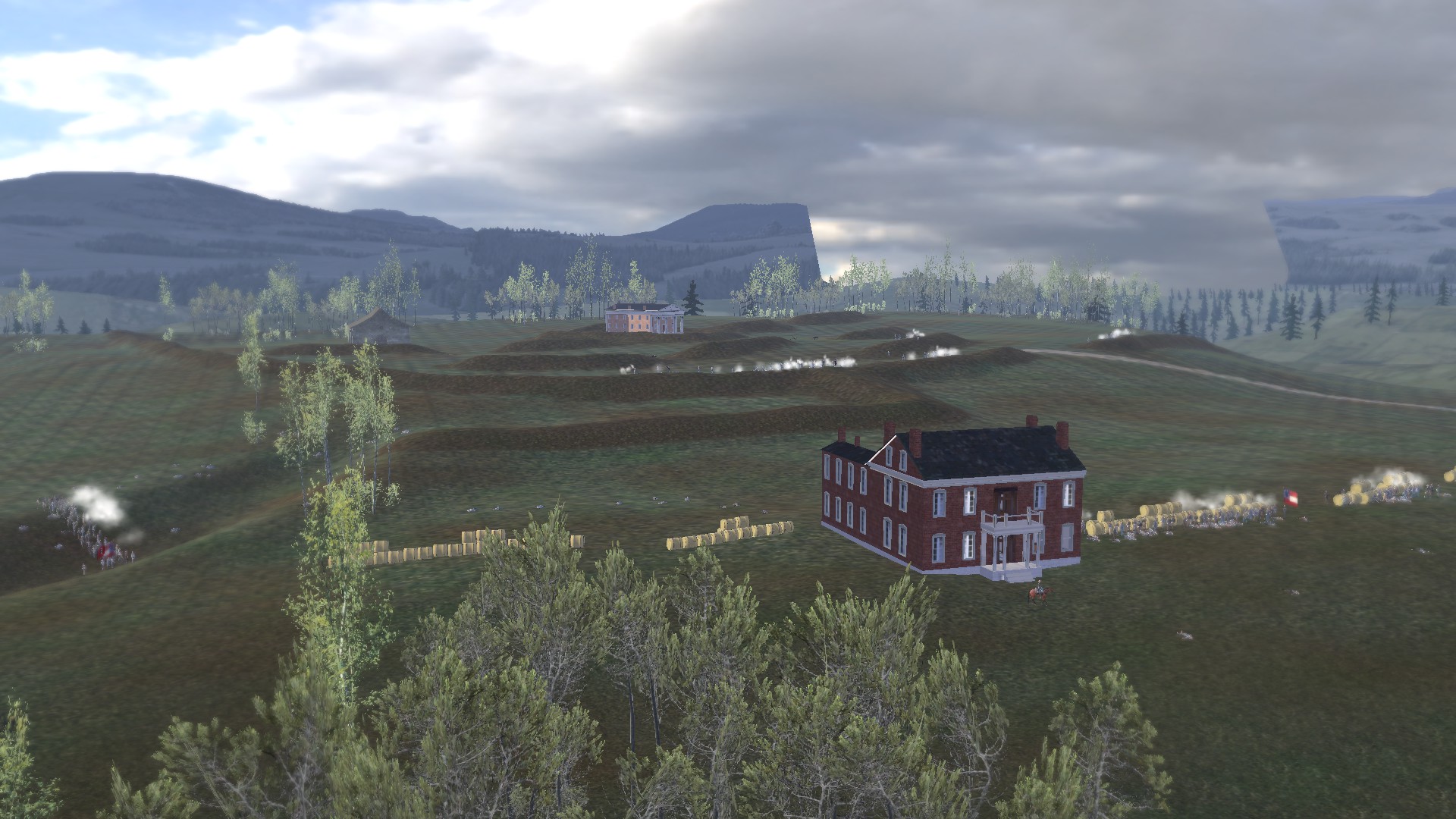
Lexington was an agricultural town of over 4,000 residents and served as the county seat of Lafayette County, enjoying a position of considerable local importance on the Missouri River. Hemp, tobacco, coal and cattle all contributed to the town's wealth, as did the river trade. Though Missouri remained in the Union during the war, many of Lexington's residents were slaveowners, and several openly sympathized with the Southern cause. Following their victory at Wilson's Creek, the main body of the pro-Confederate Missouri State Guard under Major General Sterling Price marched toward the Missouri-Kansas border with around 7,000 men to repel incursions by Lane's pro-Union Kansas Brigade. On September 2nd, 1861, the Missouri State Guard drove away Lane's Kansas Brigade at the Battle of Dry Wood Creek. Price then turned north along the border and toward Lexington, intending to break Union control of the Missouri River and gather recruits.
On September 10th, Union Colonel James A. Mulligan arrived to take command at Lexington, with his 23rd Illinois Volunteer Infantry Regiment, known as the "Irish Brigade", and a detachment of the 27th Missouri Mounted Infantry under Lieutenant Colonel Benjamin W. Grover. The 13th Missouri Infantry and Van Horn's United States Reserve Battalion returned to Lexington the following day, and Mulligan then commanded 3,500 men. He quickly ordered his men to begin constructing extensive fortifications around the town's Masonic College, where it soon developed a fatal shortage of drinking water. Further reinforcements under Samuel D. Sturgis were dispatched to assist Colonel Mulligan, but they were ambushed by pro-Confederate militia who had been alerted by a secessionist telegraph tapper, and were thus compelled to retreat.
General Price and his army of around 15,000 men arrived at Lexington on September 11th, 1861, and skirmishing began the next morning. Price pulled back several miles to await his artillery and infantry, and with their arrival in the afternoon, he resumed the advance. Four companies of the 13th Missouri Infantry and two companies of Van Horn's battalion battled Price's advance elements among the tombstones in Machpelah Cemetery south of town, hoping to buy time for the rest of Mulligan's men to complete their defensive preparations. Price's artillery deployed together with his growing infantry contingent, and dislodged the defenders, forcing them back to their fortifications around the Masonic College. The Federals remained trapped in their fortress, surrounded by an army nearly five times their size. General Price decided to await his own ammunition wagons, other supplies and reinforcements before renewing the assault.
On September 18th, Price had determined the time had come and ordered the State Guard to advance. Under heavy artillery fire, they pushed the Union troops back into their inner works. Price's cannon bombarded the Union earthworks for nine hours, utilizing heated shot in an attempt to set fire to the Masonic College and other Union positions. However, Mulligan had stationed a youth in the attic of the college's main building, and he was able to remove all of the incoming rounds before they were able to set the building on fire. On September 19th, the Missouri State Guard consolidated its positions, kept the Union troops under heavy artillery fire, and prepared for their final attack. Wells within the Union lines had gone dry, and Confederate sharpshooters were able to cover a nearby spring, picking off any man who tried to approach it.
On the evening of September 19th, soldiers of Confederate Brigadier General Thomas A. Harris's 2nd Division of the State Guard began using hemp bales seized from nearby warehouses to construct a moveable breastwork facing the Union fortifications. The bales were soaked in river water overnight to prevent them from catching fire due to any heated rounds fired from the Union cannons. Harris's plan was for his troops to roll the bales up the hill the following day, using them for cover as they advanced close enough to the Union garrison for a final charge. The hemp bale line started in the vicinity of the Anderson house, extending north along the hillside for about 200 yards. In many places the hemp bales were stacked two high to provide additional protection.
Harris's men advanced behind his mobile breastworks early on the morning of September 20th, and as the fighting progressed, State Guardsmen from other divisions joined Harris's men behind the hemp bales, increasing the amount of fire directed toward the Union garrison. Although the Union defenders poured red-hot shot into the advancing bales, their soaking in the Missouri River the previous night had given the hemp the desired immunity to not only catching fire from heated shot, but was also able to repel cannon and small arms fire. When a cannonball would strike one of the soaked hemp bales, it would roll backwards and absorb the force of the impact. By early afternoon, the rolling fortification had advanced close enough for the Confederates to take the Union works in a final rush. Harris's men, who were the closest to the Union lines, stormed the trenches, but were repulsed. After holding off the attack by the Missouri State Guards, a white flag appeared on the Union fortifications. There was some confusion as to who had raised the white flag, because Mulligan had not done so. It was in fact Major Frederick Becker of the Missouri Home Guards (U.S.) who put up the white flag. Mulligan called an impromptu council of war, and by a vote of 6-2, his subordinate officers voted to surrender, with Mulligan voting not to surrender. Mulligan reluctantly agreed to immediate unconditional surrender, and at 2:00 p.m. his men vacated their trenches and stacked their arms.
Casualties at Lexington were relatively low because the battle was largely fought from protective positions. General Price claimed a loss of only 25 men killed and 72 wounded in his official report. However, a study of his subordinates' after-action reports reveals a total of at least 30 killed and 120 wounded. This would not include any civilians or recruits who had not yet enrolled but who had joined the fighting. The Union lost 39 killed and 120 wounded, including Lt. Col. Benjamin W. Grover, commanding the 27th Missouri Mounted Infantry, who was wounded by a musket ball in the thigh, and succumbed to his wound on October 31st, 1861. The entire Union garrison was taken prisoner, and were later paroled by General Price, with the notable exception of Colonel Mulligan, who refused parole. Price was reportedly so impressed by Colonel Mulligan's demeanor and conduct during and after the battle that he offered Mulligan his own horse and buggy, and ordered him to be safely escorted back to Union lines. Mulligan was mortally wounded at the Second Battle of Kernstown near Winchester, Virginia on July 24th, 1864, while Price would go on to command Confederate forces at numerous battles throughout the Western and Trans-Mississippi theaters.
Anderson House
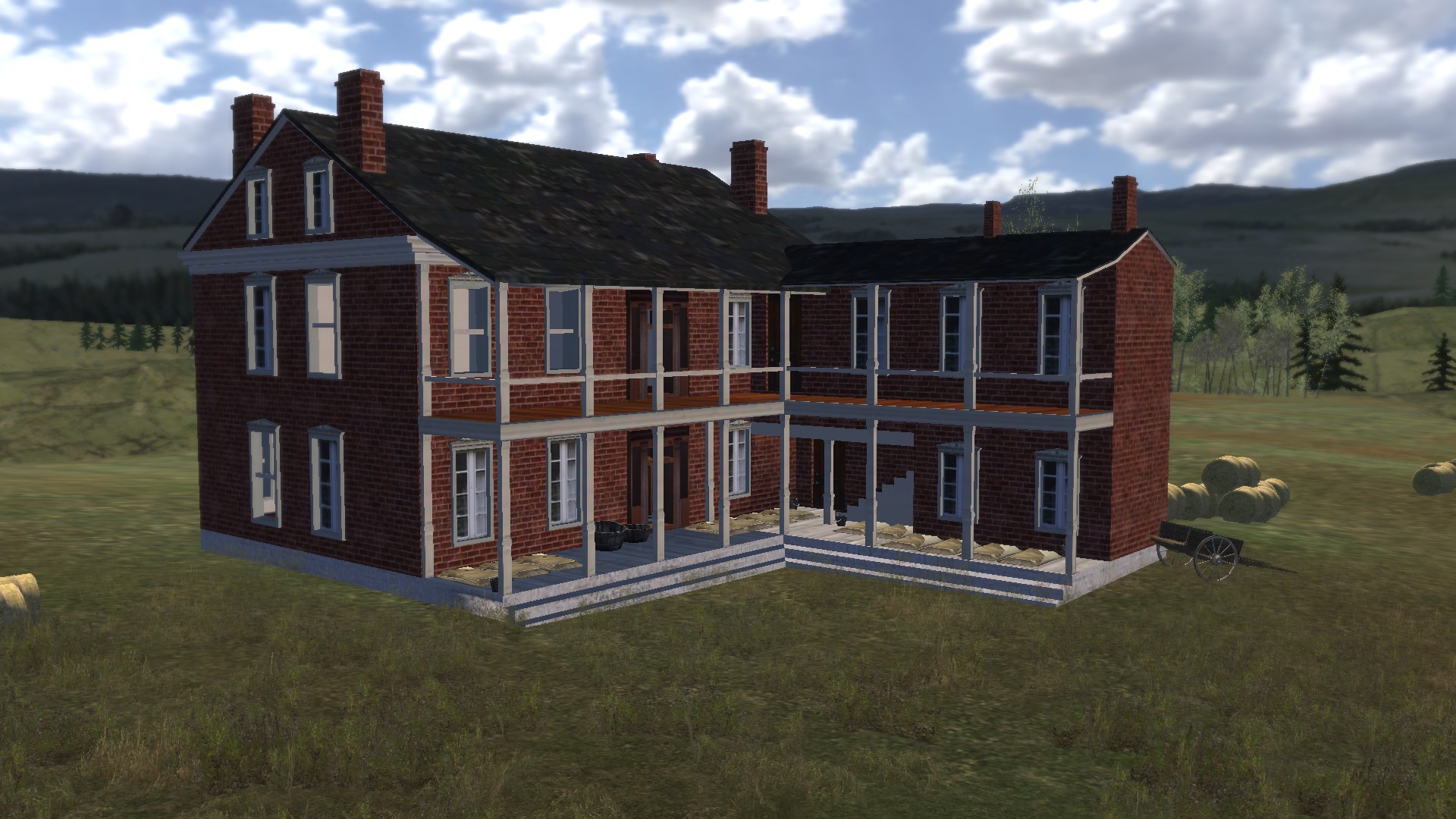
The Anderson House was a three-story, Greek Revival style house constructed by Oliver Anderson, a prominent Lexington manufacturer. The Anderson family was evicted from their home by the Union army in July 1861, and the home was used a field hospital. At the start of the battle, over a hundred sick or wounded Union soldiers occupied this structure, with their care being entrusted to a surgeon named Dr. Cooley. Because the house stood only a few yards from Missouri State Guard positions, it proved tactically significant and General Thomas Harris ordered soldiers from his 2nd Division to capture the house on September 18th. Shocked at what he considered a violation of the Laws of War, Colonel Mulligan ordered the structure to be retaken. Union troops charged from their lines and recaptured the house, but suffering heavy casualties in the process. Harris's troops recaptured the hospital later that day, and it remained in Confederate hands thereafter.
In an infamous incident during the Union assault to retake the Anderson house, Union troops summarily executed three Missouri State Guard soldiers at the base of the grand staircase in the main hall. The Confederates protested that the men had already surrendered, and should have been treated as prisoners of war. The Union troops, however, considered the prisoners to have been in violation of the Laws of War for having attacked a hospital in the first place. The Anderson home was heavily damaged by cannon and rifle projectiles, with many of the holes still visible both inside and outside the house today.
In the mod, you can actually go inside of the Anderson House, and the AI can navigate inside of the house as well. This allows the player to station sharpshooters inside, which can shoot into the defender's earthworks from the second floor of the house.
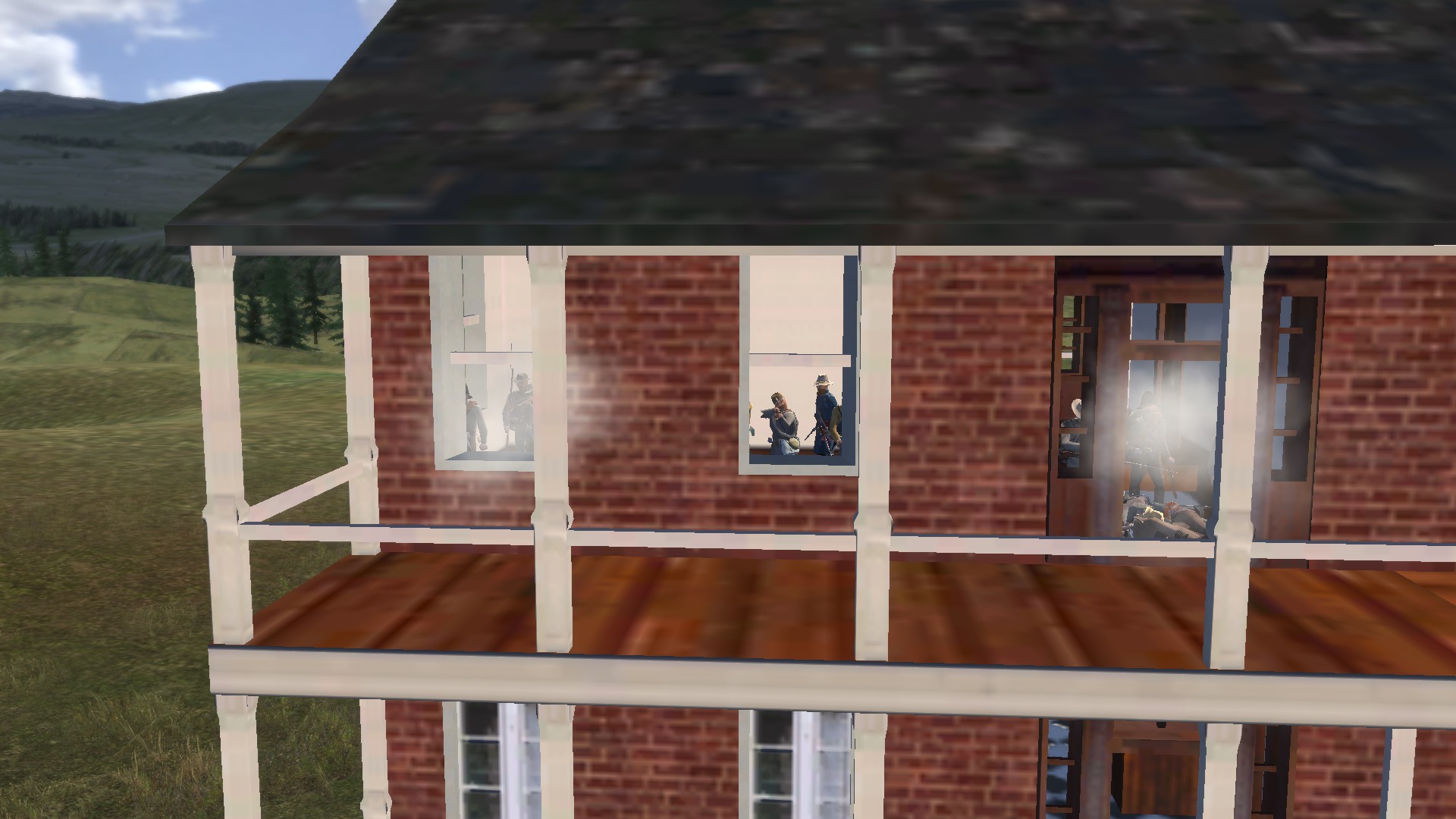
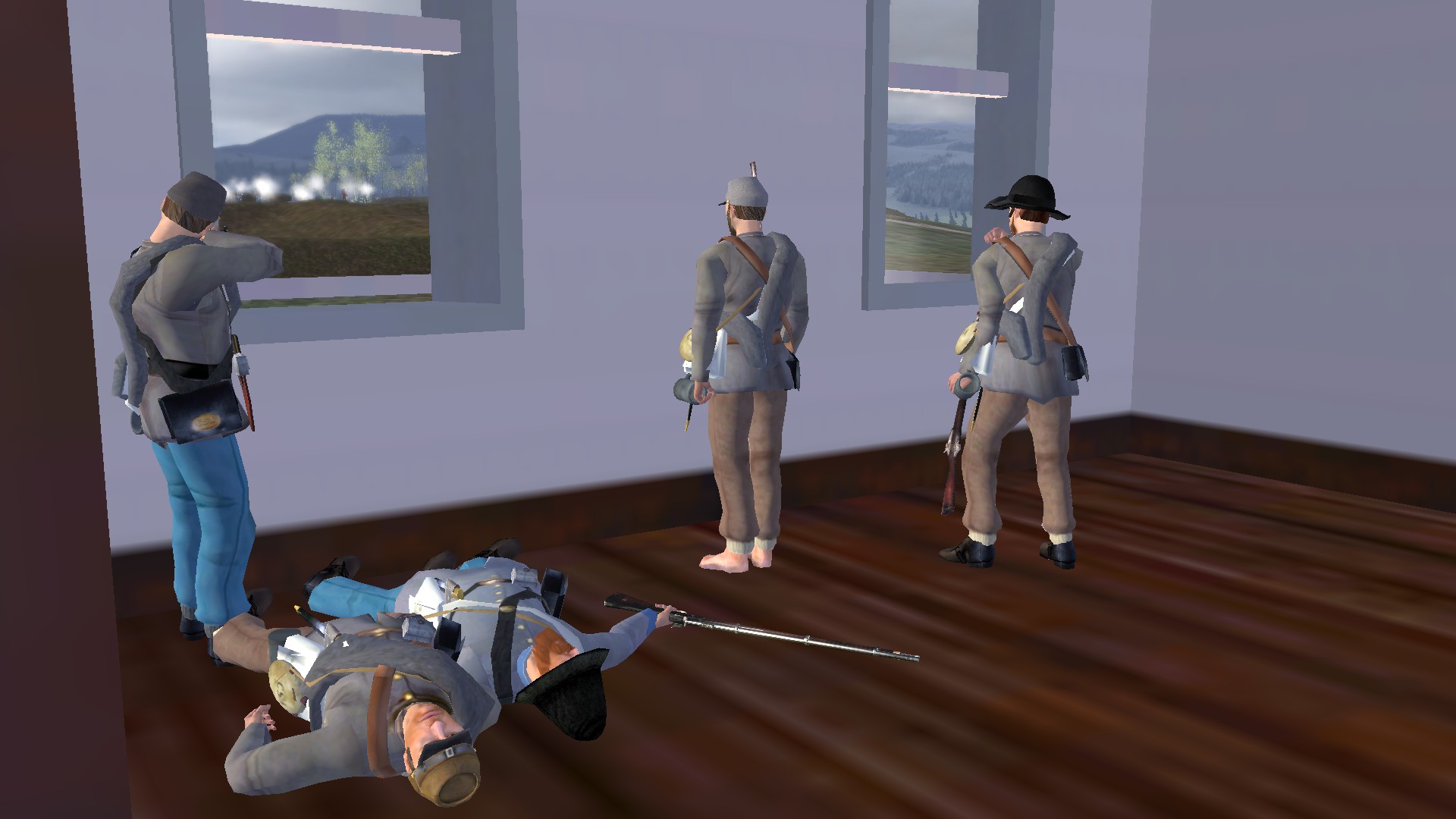
Masonic College
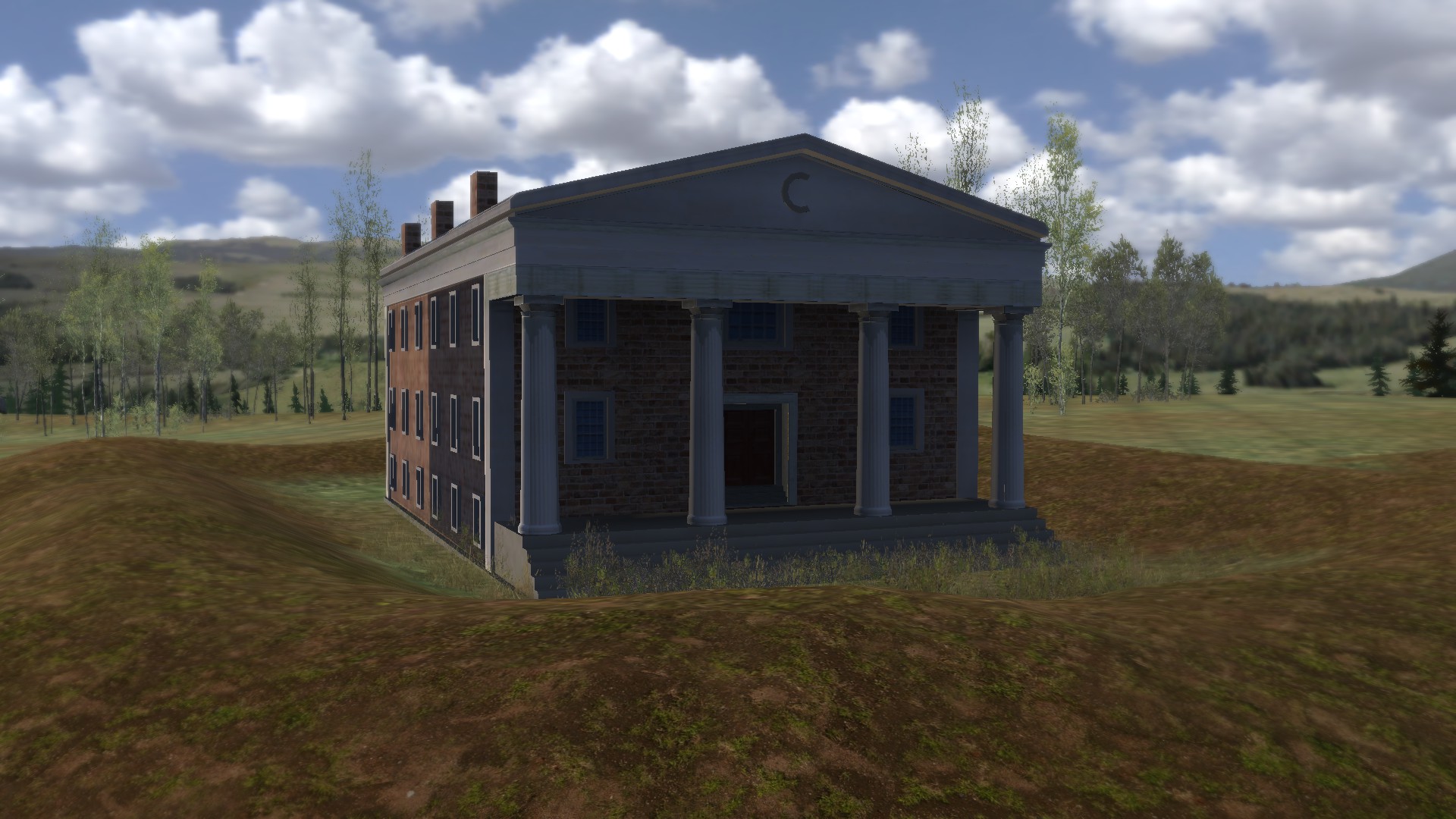
The Masonic College was erected and dedicated on July 11th, 1848, and the two-story brick building was built in the Greek Revival style with four fluted Ionic columns. The college was primarily for the benefit of the orphan children of deceased Freemasons, and each member in the state was to pay a small per capita tax to support it. Facing severe financial shortfalls, the college closed in 1857. During the Battle of Lexington, the building and grounds served as the headquarters for Colonel James A. Mulligan. After his surrender, the college was later abandoned by the Missouri State Guard, and it was used by Union troops for the remainder of the war.
Corinth

Since there were two battles at Corinth historically, and fighting in both battles spanned over a variety of different locations outside of the city itself, this scene is more of a representation of an alternative history scenario that depicts a battle over the railroad junction and the city. The closet real life example that matches this scene is the brief Confederate breakthrough during the second battle at Corinth. The town of Corinth was a strategic point at the junction of two vital railroad lines, referred to as the "vertebrae of the Confederacy". The Union saw Corinth to be as important an objective as capturing Richmond.
Please be aware that this scene does have some strange issues that we are still working on. These include the player's soldiers always starting off every game by default using the order "stand ground", and they are spread out. There is also some initial framerate drops, but things begin to smooth out after you get your troops into formation and there are a few casualties. Crashes may still be possible, but so far this scene seems to be stable enough to play on.
The inspiration for this scene came from this painting:
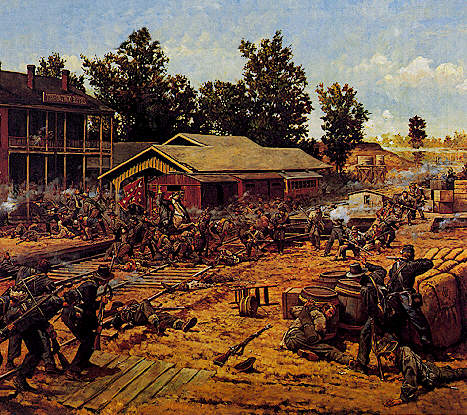
Tishomingo Hotel
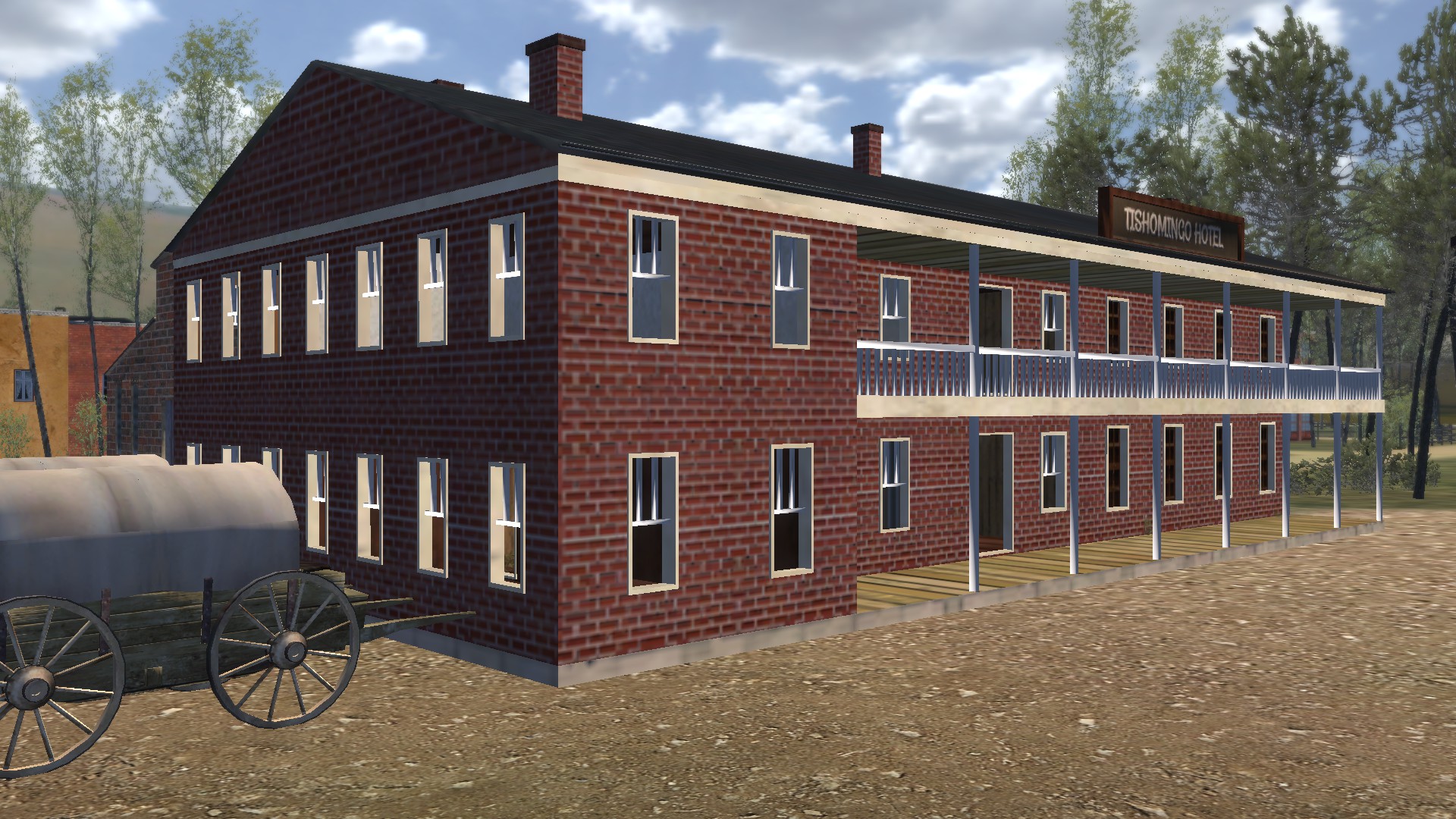
The two-story hotel was built in 1859 by Swiss architect Martin Siegrist in a prime location, close to the railroad depot. During the Civil War, it became a military hospital for both Union and Confederate armies. It was first used as a Confederate hospital after the Battle of Shiloh in April 1862, and then a Union hospital after Battle of Corinth in October that same year. It was later used as a shelter for escaped slaves, and when Corinth briefly fell into Confederate hands again in 1865, the hotel was used as a supply magazine. The Confederate army under John B. Hood burned the hotel when leaving town, in order to prevent the Union army from taking control over the supplies.
During battles on this scene, there will be defenders shooting from the windows of the hotel.
Natural Bridge
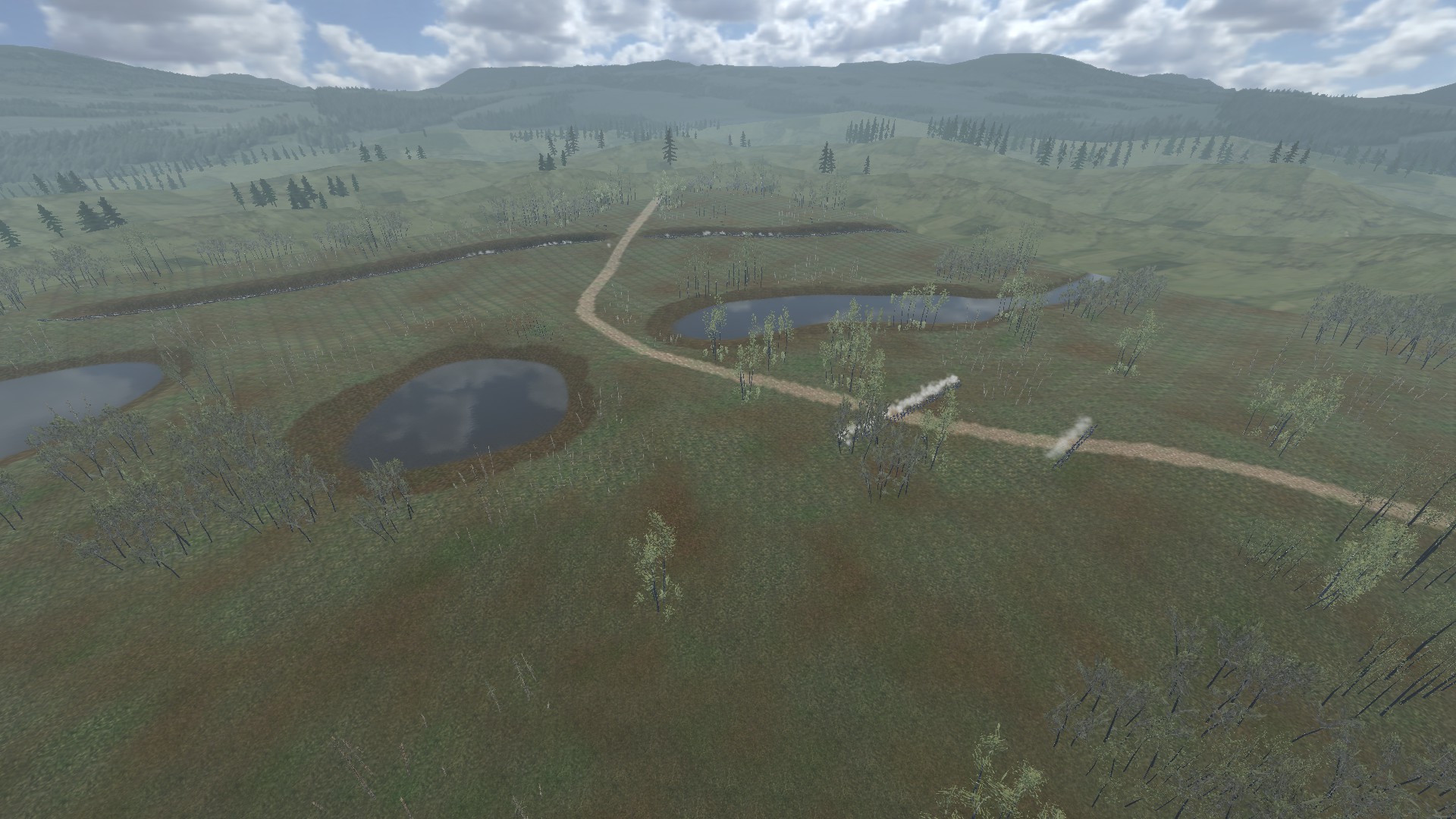
This scene is the new siege scene for Tallahassee, and is based upon the Battle of Natural Bridge which was fought near Tallahassee on March 6th, 1865. Union Brigadier General John Newton had undertaken a joint force expedition to engage and destroy Confederate troops that had attacked at Cedar Keys, Florida and Fort Myers and were allegedly encamped somewhere around St. Marks. The Union Navy had trouble getting its ships up the St. Marks River, but the Union army was able to advance, and after finding one bridge destroyed, attempted to cross the river at Natural Bridge before dawn on March 6th. The Union troops initially pushed the Confederate forces back, but not away from the bridge. A small group of Confederate troops and volunteers under Brigadier General William Miller, which included teenagers from the nearby Florida Military and Collegiate Institute that would later become Florida State University, were protected by breastworks, and guarded all of the approaches, as well as the bridge itself. The action at Natural Bridge lasted most of the day, but, unable to take the bridge in three separate charges, the Union troops retreated. Sailors from USS Hendrick Hudson participated in the action at Natural Bridge, and two were awarded the Medal of Honor for their part in this battle: Seaman John Mack and Coxswain George Schutt. A detachment of the United States Colored Troops also participated in this battle, making an attempt to charge the Confederate defenses, but were unsuccessful. Union losses in this battle included 21 men killed, 89 wounded, and 38 captured. Confederate losses were notably lighter, with only 3 men killed and 23 wounded.
This map includes three crossing points for the attackers: the center Natural Bridge, a ford across the river on the right, and some rough terrain around the sinkholes to the left. All paths will present their own benefits and dangers and it will be up to you to decide how to tackle this problem. The defenders will be behind strong earthworks and it will be difficult to approach their lines.
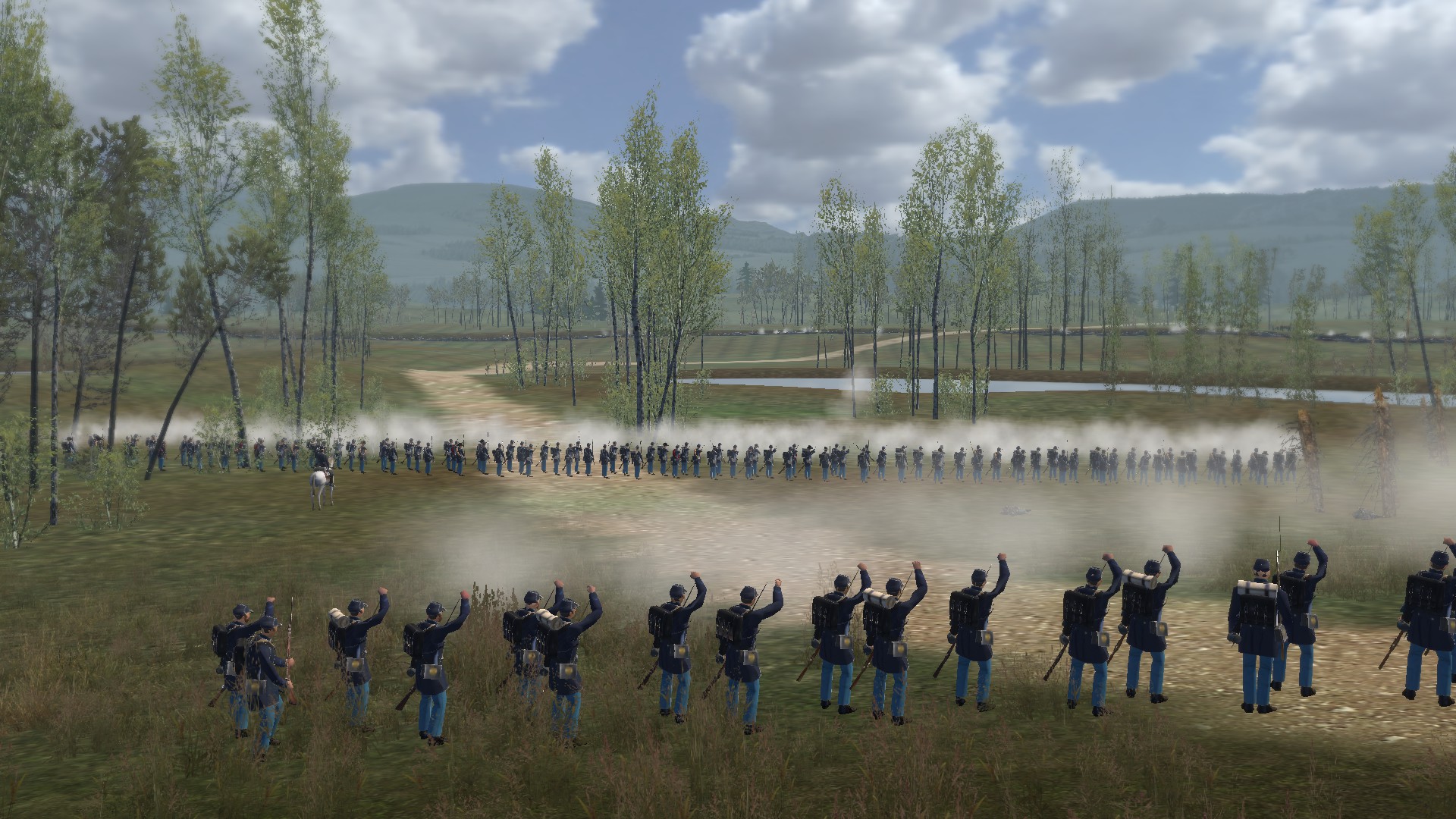
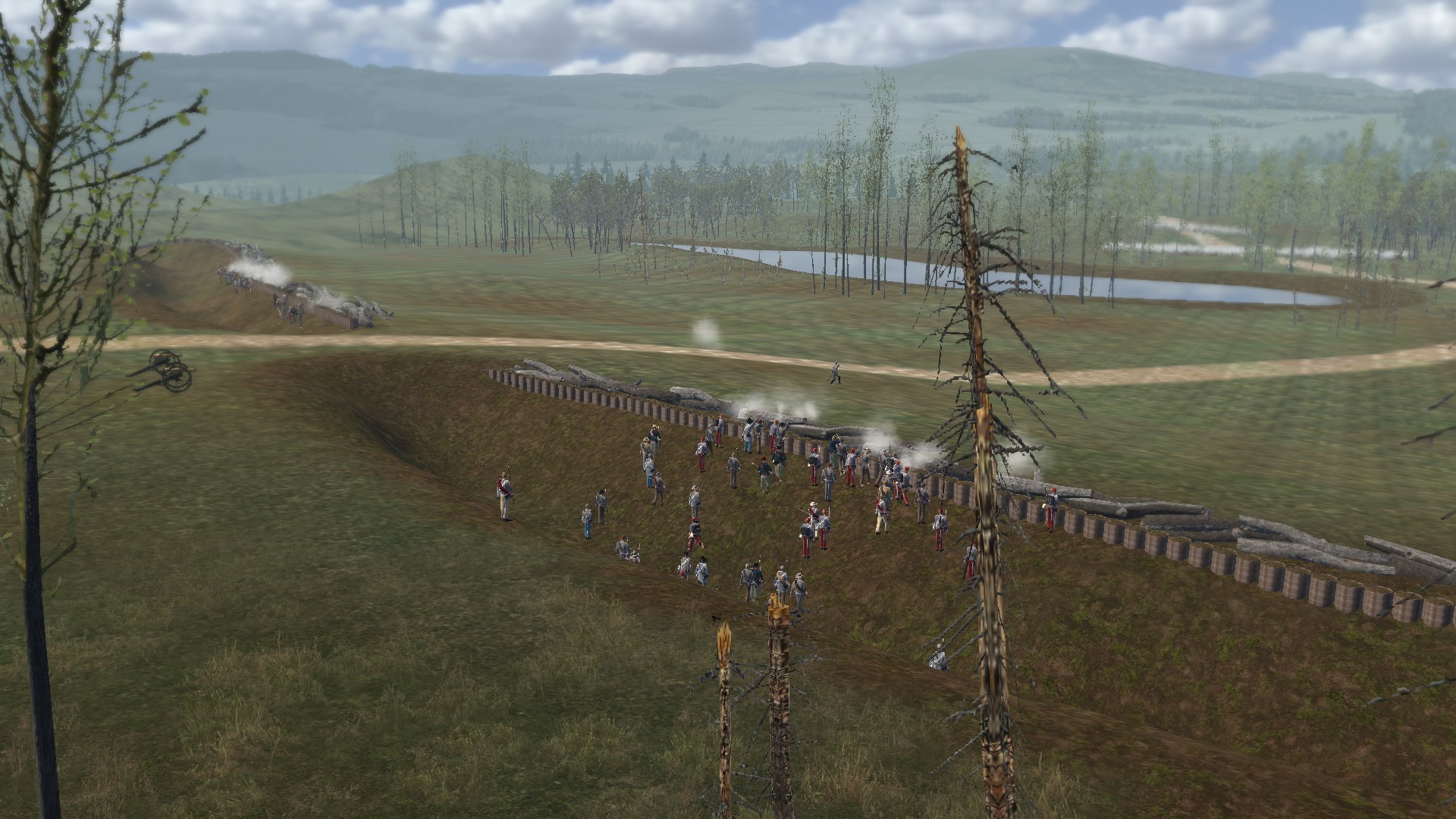
Bugle Calls

Another amazing new feature in the mod is that most player orders will now have a bugle call associated with it. There is also a delay of 3 seconds between the issuing of each order, so this will prevent sounds from overlapping in an obnoxious way. Especially, for example, if you want to give an advance or fall back order, which usually requires giving the same order to the AI several times in quick succession. The sound of the bugle calls comes from a random AI soldier in the group you selected, and it plays as a 3D sound, so this actually helps simulate having a bugler within the ranks of your various units. I have created a preview video to demonstrate all the bugle calls in action, so please watch the video below to see how it all works!
The last, but most certainly not the least thing we wish to reveal is the addition of the rebel yell as a war cry ability in the mod. This means that when you press the B key in a battle, you will give the rebel yell, using one of the best recordings of reenactors recreating this sound in real life. Using the rebel yell in a battle will also cause enemy soldiers that are a lower level than the player, and who are nearby, to flee. The sound effect comes from the player, however, so it is best used in roleplay scenarios, where you are close by to a group of your soldiers. Also the player can use this ability regardless of their faction association, so... just don't press B if you want to roleplay as the Union. Below is a video preview of the rebel yell being used in-game.
We would now like to take a moment to thank all of the people who have generously volunteered their time and efforts to help our mod progress, as well as all of our great players and fans who offer us such wonderful support. So much of this would not be possible without the help of so many of you out there, and it is thanks to you that the dream of an open world singleplayer American Civil War experience in Mount & Blade: Warband became a reality. From myself and Matsuri5, we offer you all our most sincere gratitude, and not a single act of your kindness ever goes unappreciated. We are eagerly looking forward to a bright future for the mod, and have many more good things cooking that we plan to bring into the game.
We would also like to make a special shout out to Johandros and his M&B Studio tool, which can be found here on moddb. His program aims to be an all-in-one modding tool for making easy changes to items, troops, etc. This tool, along with the assistance of Johandros himself, has helped us to decompile the mod and create this new source code that we are currently working from.
Another brief word of praise for MSWarlord, who has taken a great interest in our mod and made a wonderful series of gameplay walkthroughs of our mod on YouTube. He has offered us a lot of historical guidance and him spreading the word through his videos is greatly appreciated.
That's all for now! Have fun with the mod, and stay tuned for future updates.
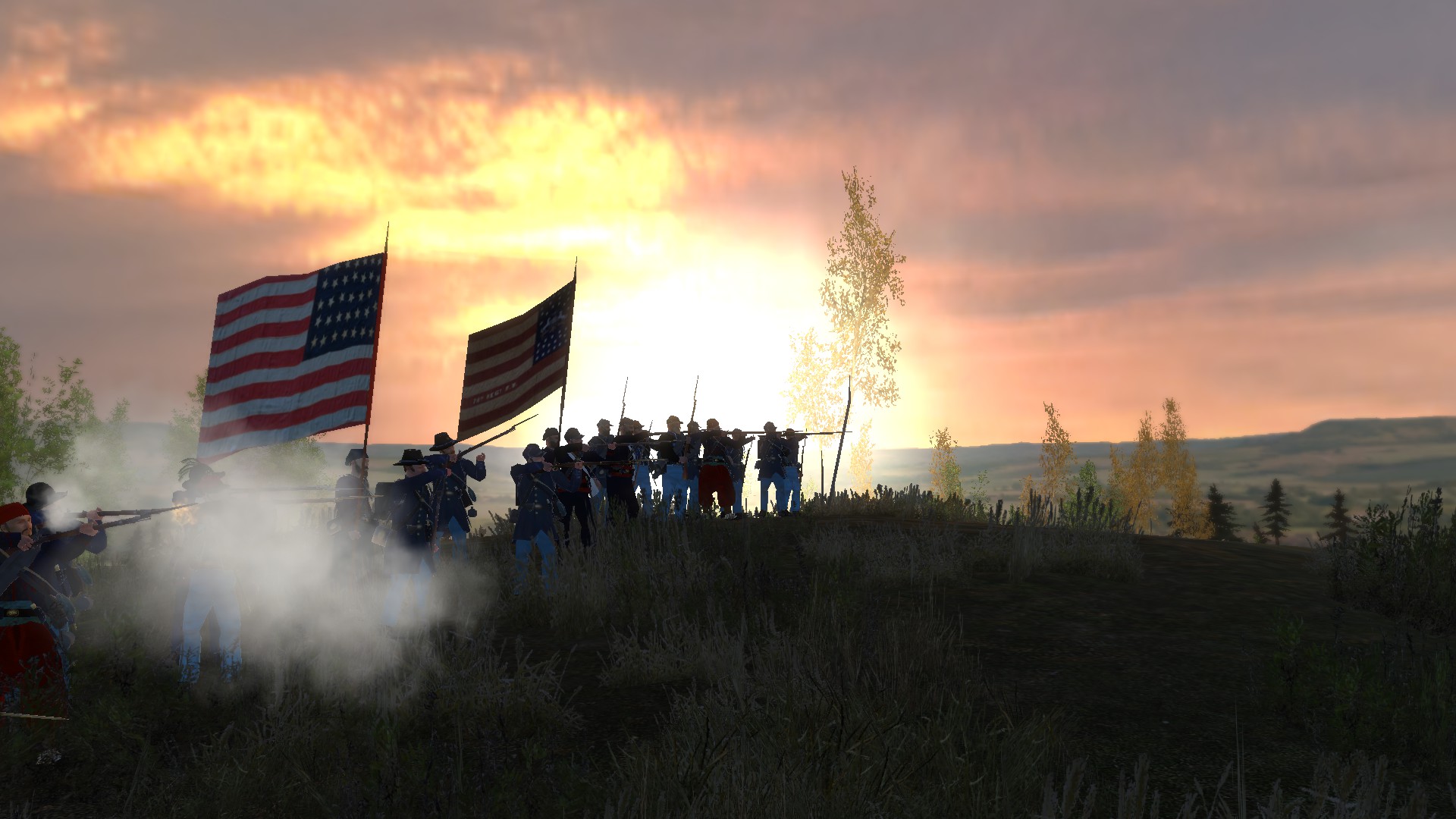

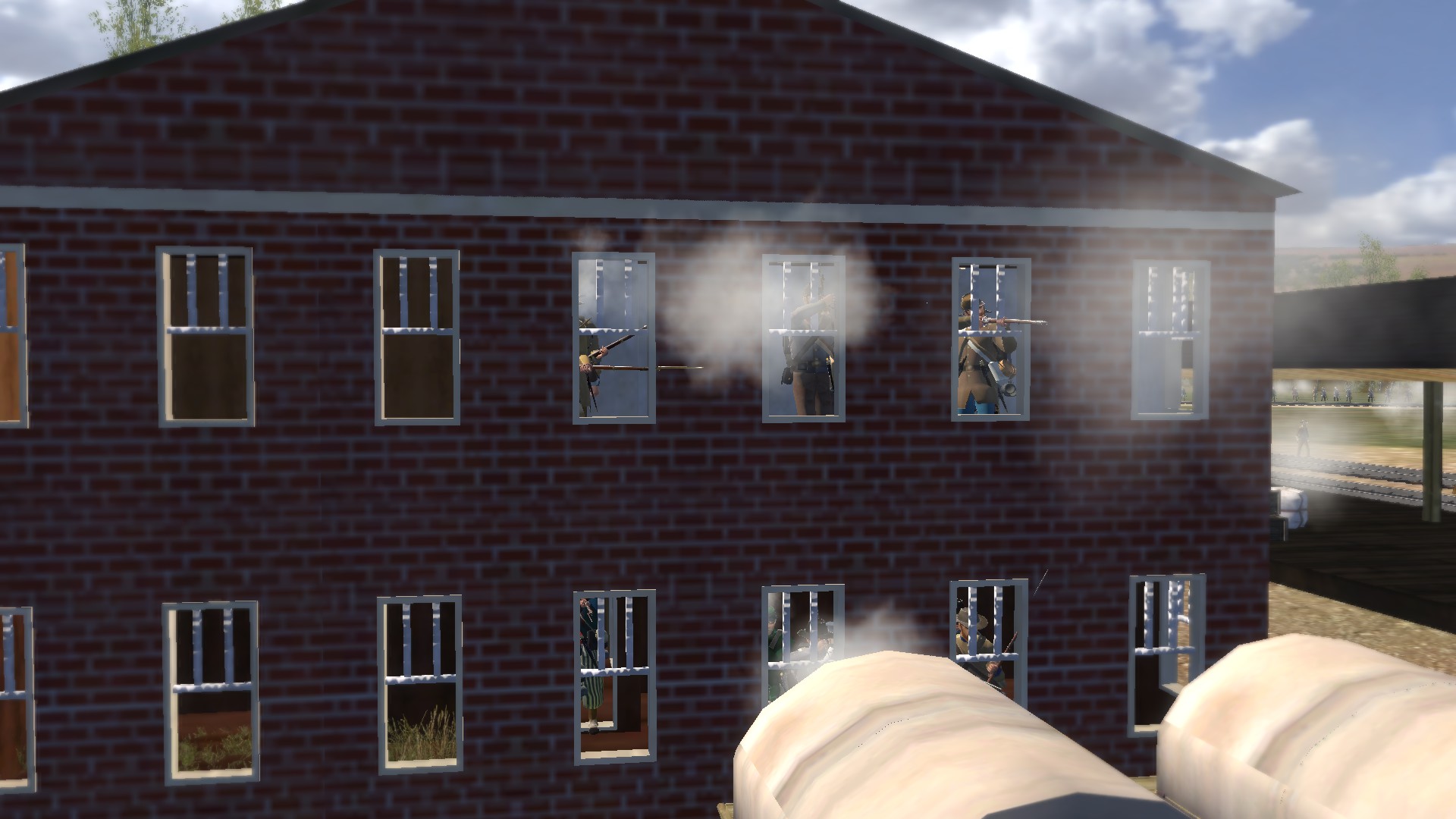

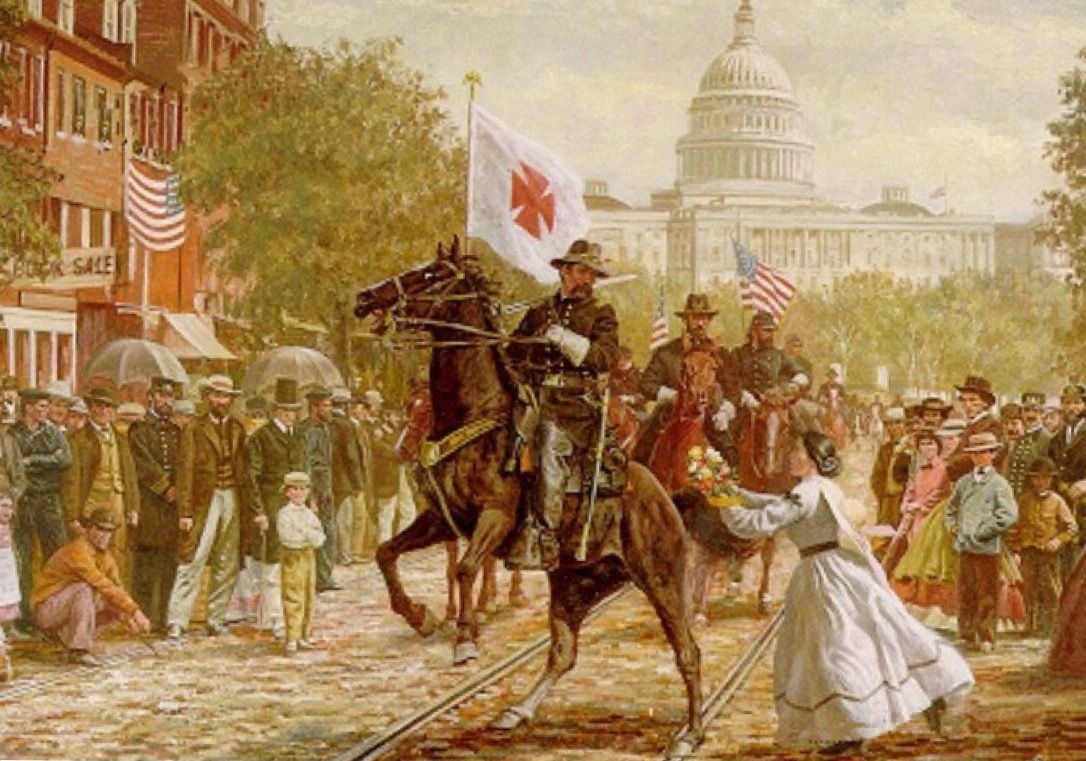


You took me by surprise with this one!
And here I thought you just made some teasers and a bunch of screenshots.
Here goes my free time... Again. xD
It's been a while since our last update, so we wanted to show our progress so far before too much time passed by. :)
Enjoy the mod!
Already on it.
And again this article is just great. I think I've already told you that I like the historical bits a lot.
The effort you and your team are taking to develop this mod... I am amazed.
Thank you guys.
EDIT: A nice next step would be if you could change the vanilla face textures of the game into something a little 'prettier' like some other mods did.
Thank you, happy to hear you enjoy the history behind all this! Helps give some meaning to what you see on the screen, and explain why it is in the mod and what makes it important. Learning should be fun, and this a great vehicle for that :)
It's possible to change the vanilla face textures, but this will also change the faces of AI generals, so they will no longer have their customized historical appearance if we do that.
That really helps, yes. But when you're interested in a topic the fun comes on it's own.
Most times at least.
I borrowed a collection of essays on early medieval England and their trade relations to Frankia/France and Scandinavia from a friend once. Some of them were REALLY badly written.
But at least I was interested in the topic. ^^
Here on the other hand I enjoyed the reading.
I can understand your reasoning behind this, but it would be great to see some better faces among the troops.
But hey; you're in charge here. I'm only suggesting.
Sir, please accept my knee
Free men do not kneel.
Glad you like the mod ;)
any translation into Spanish?
This comment is currently awaiting admin approval, join now to view.